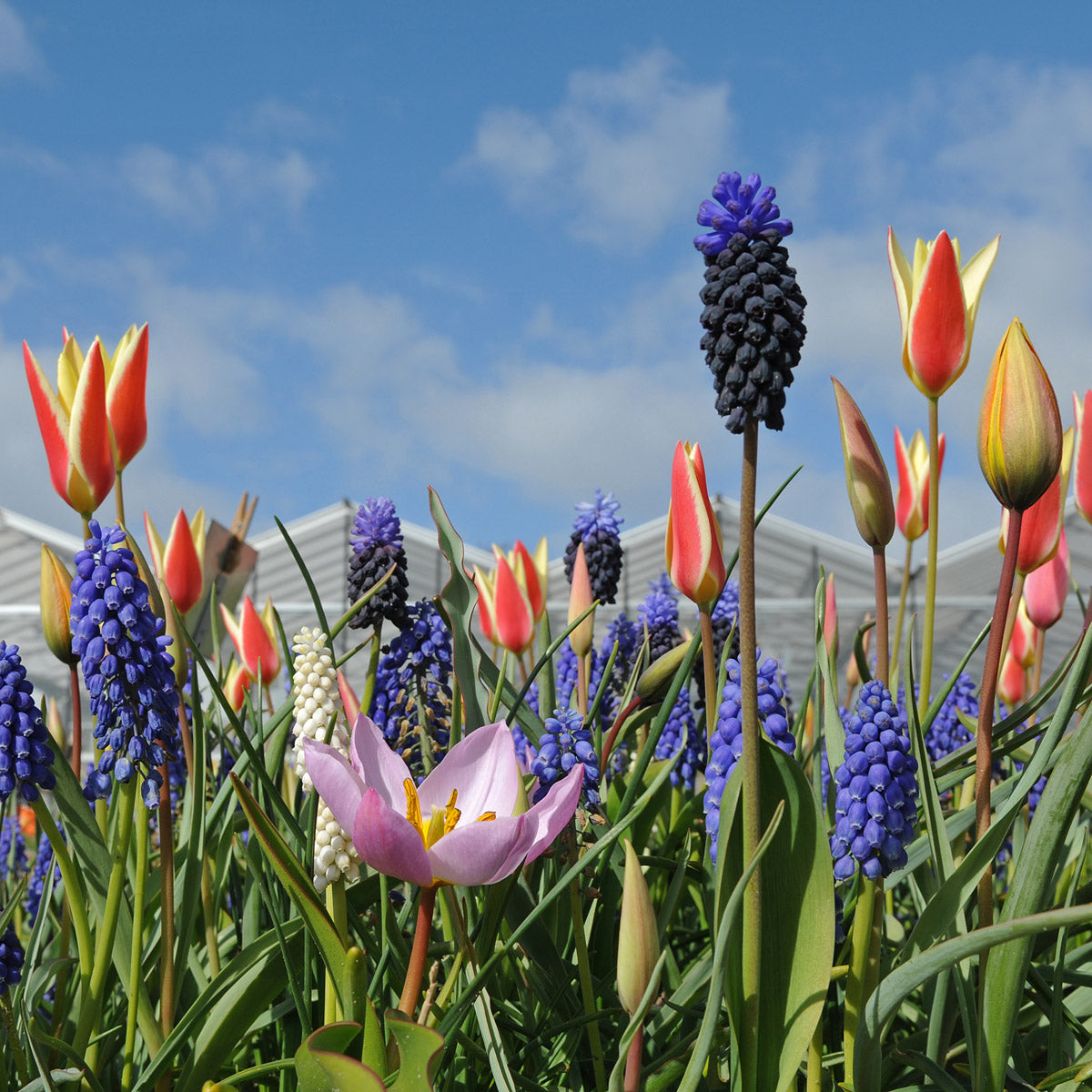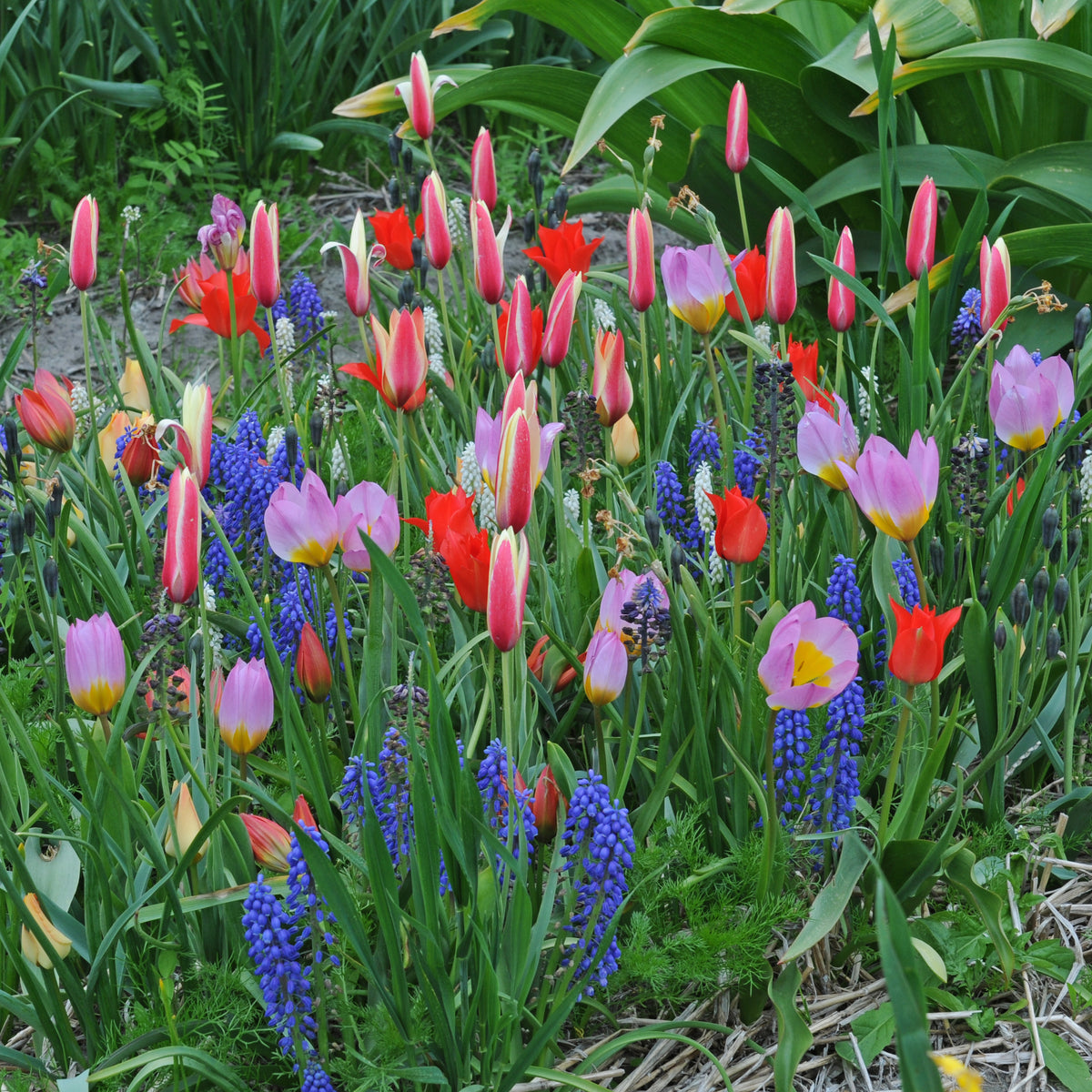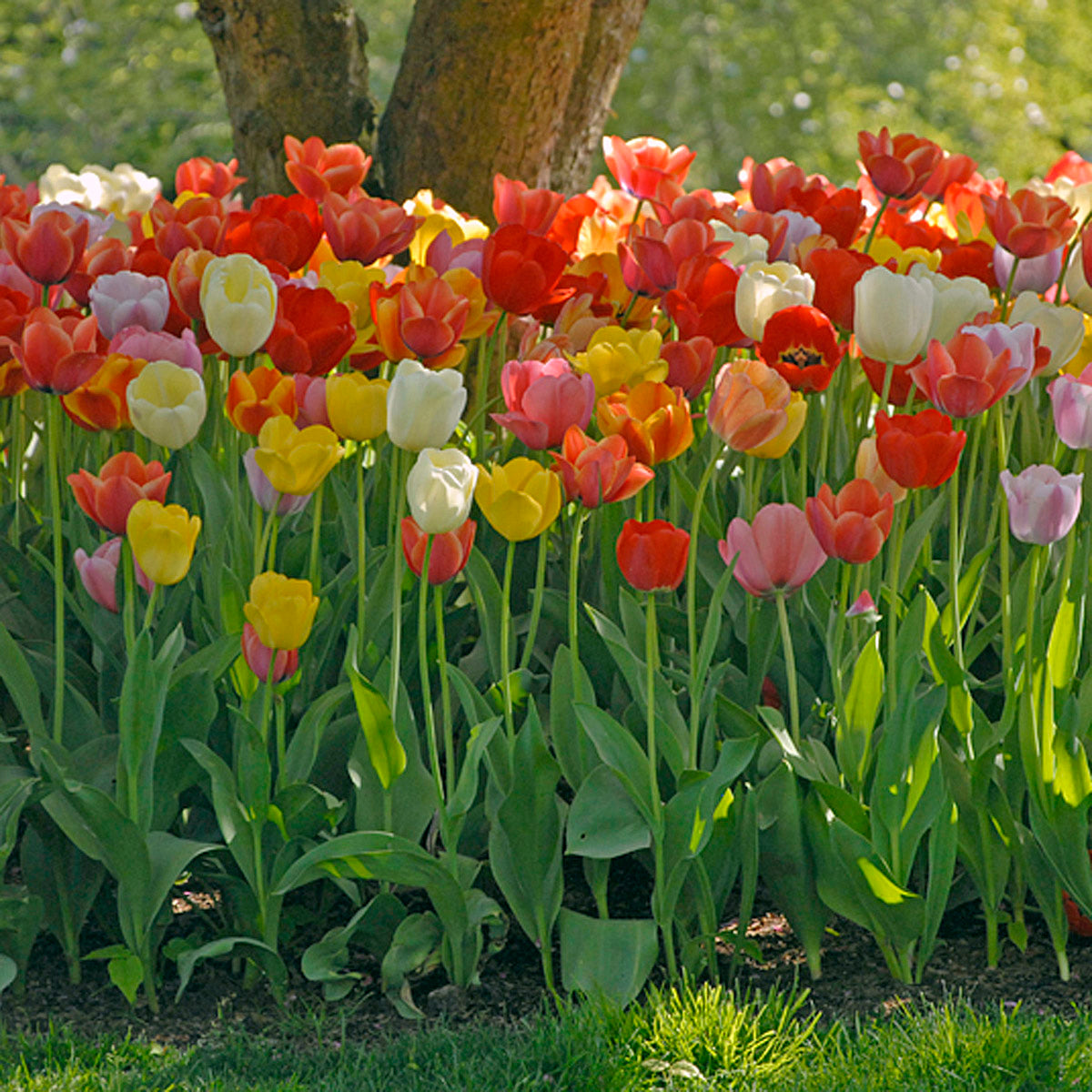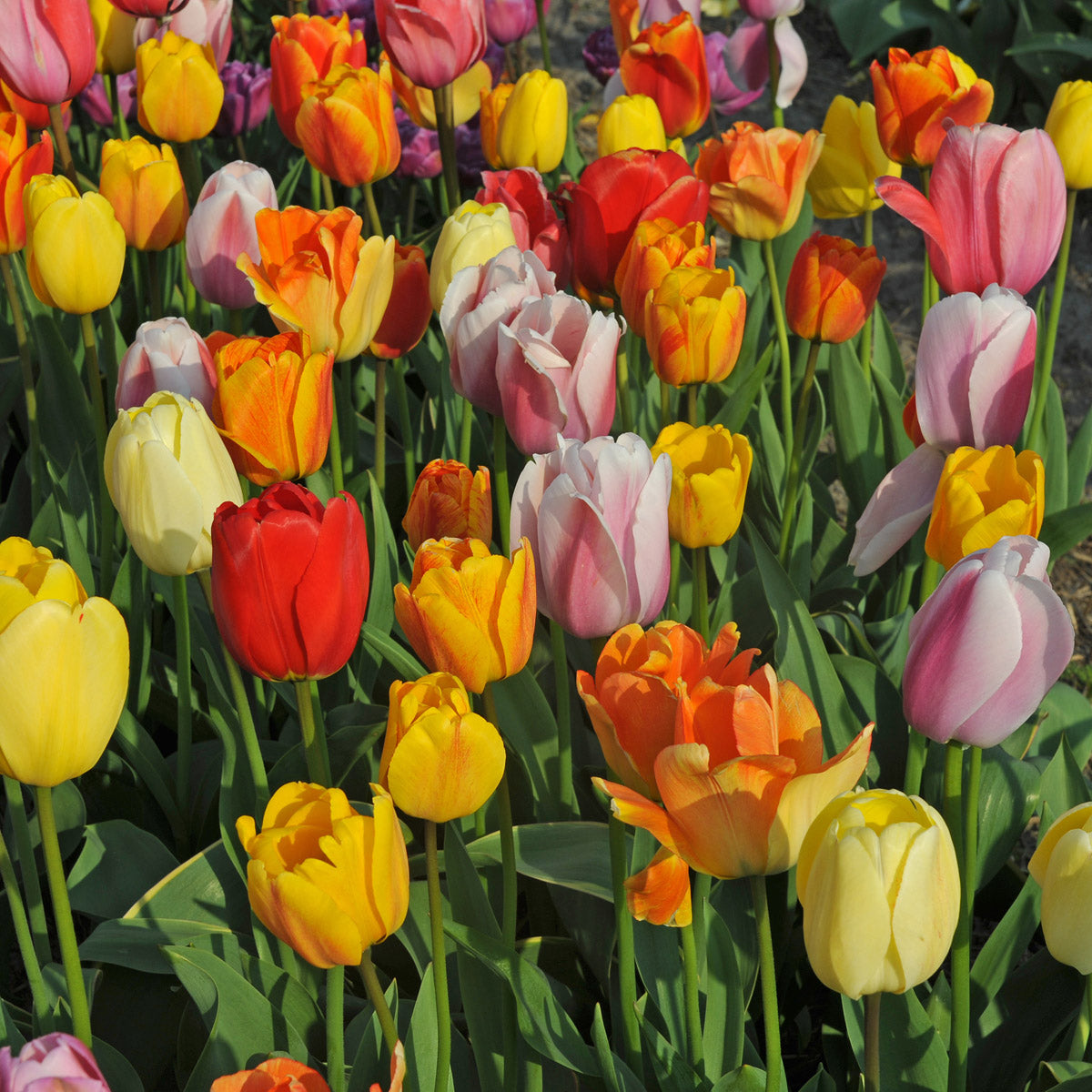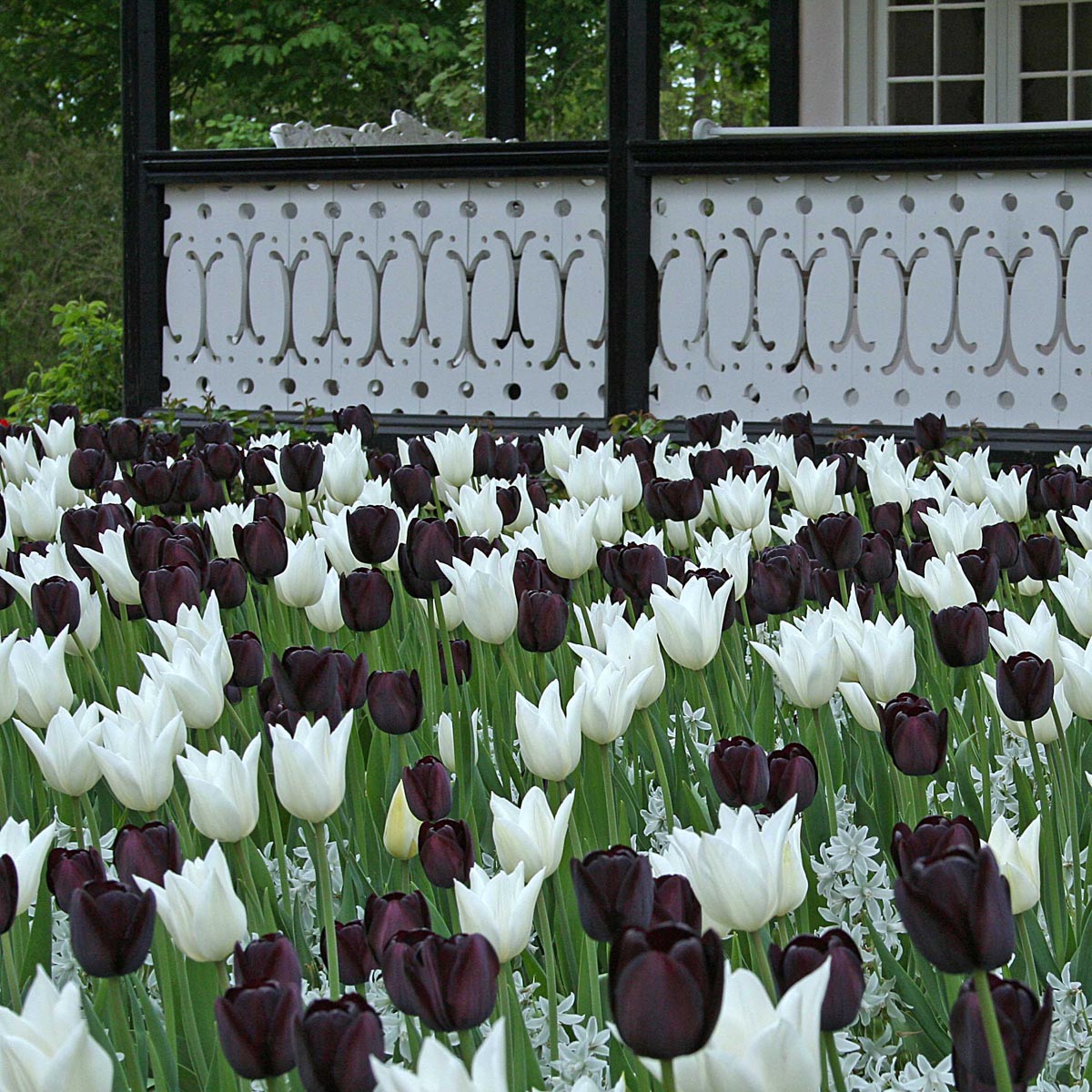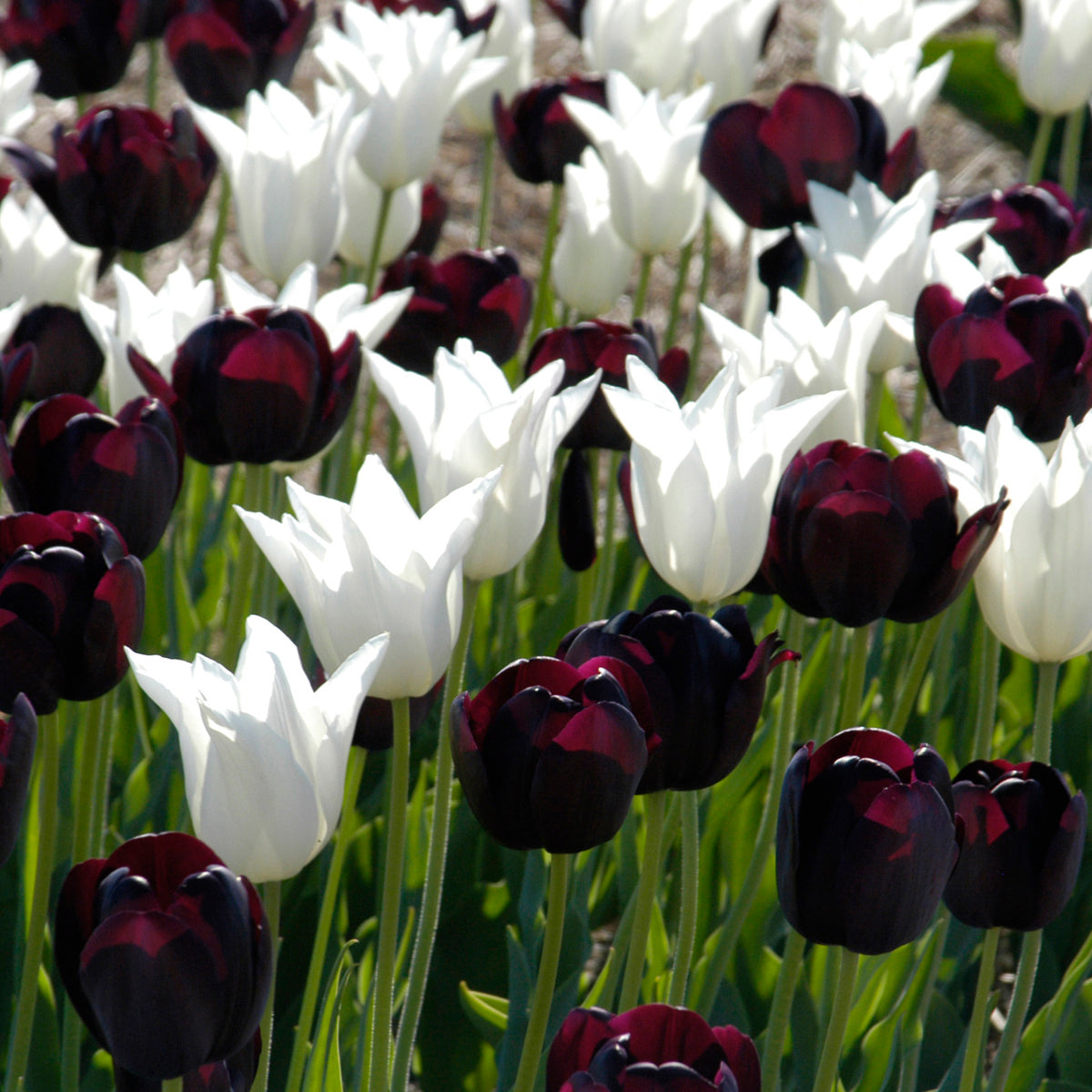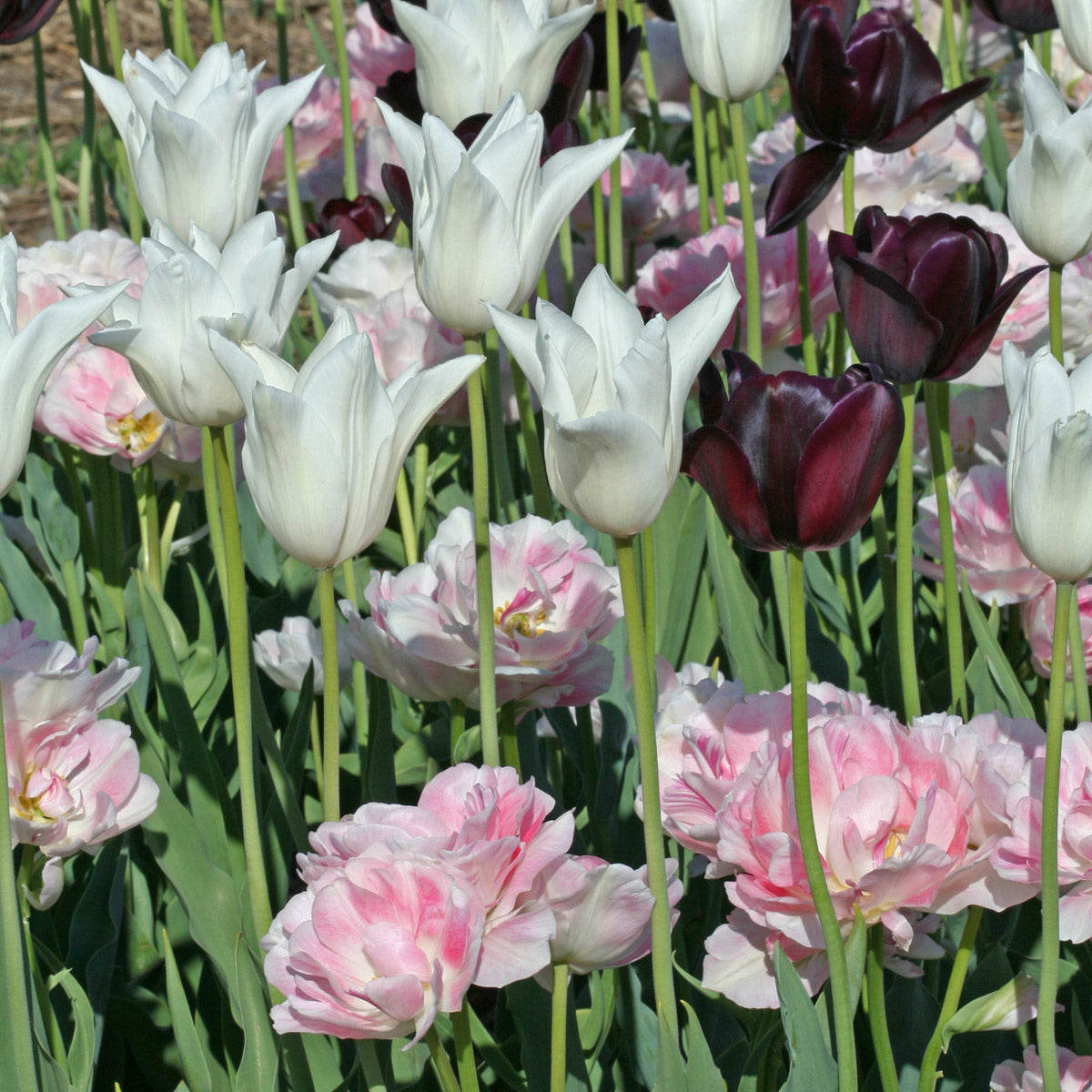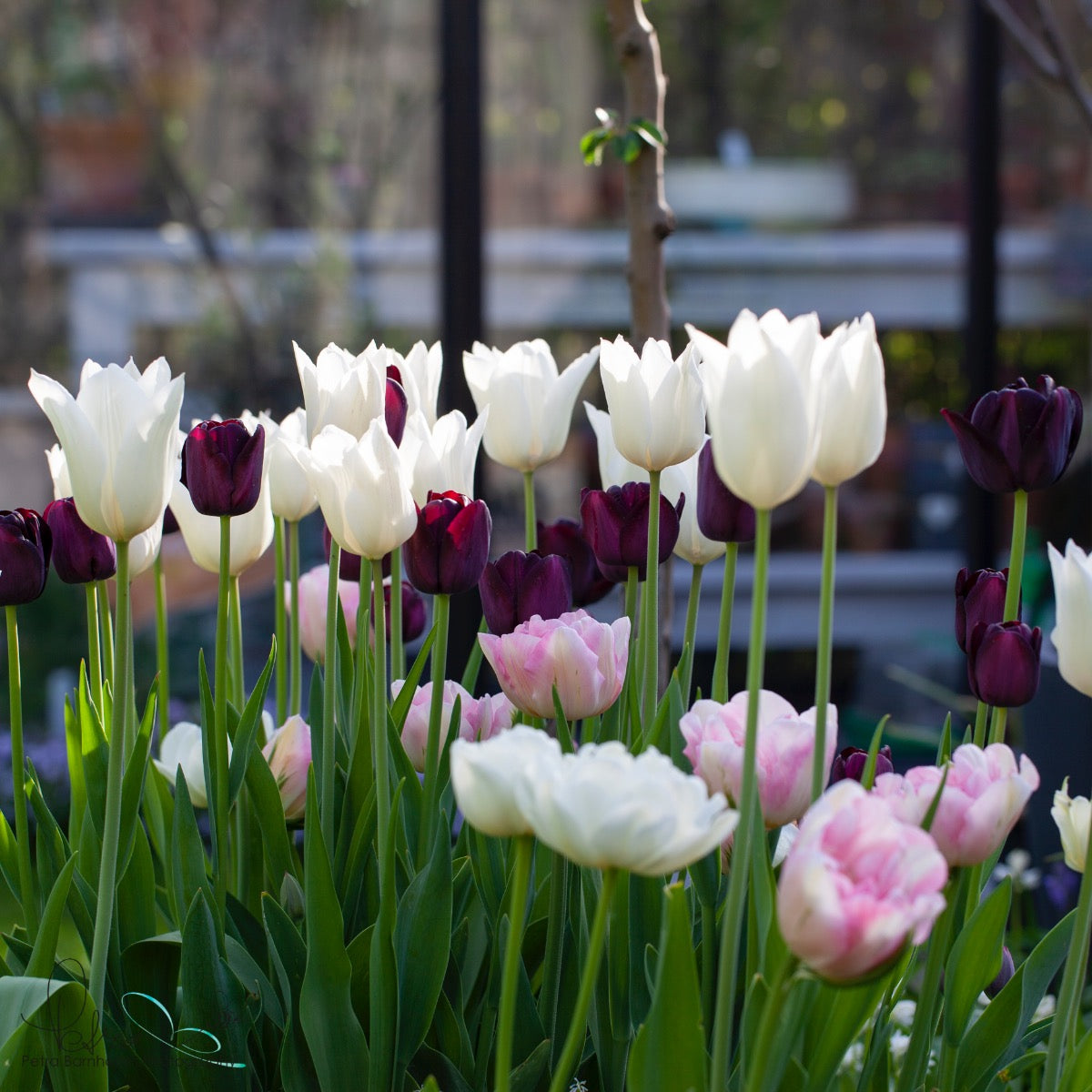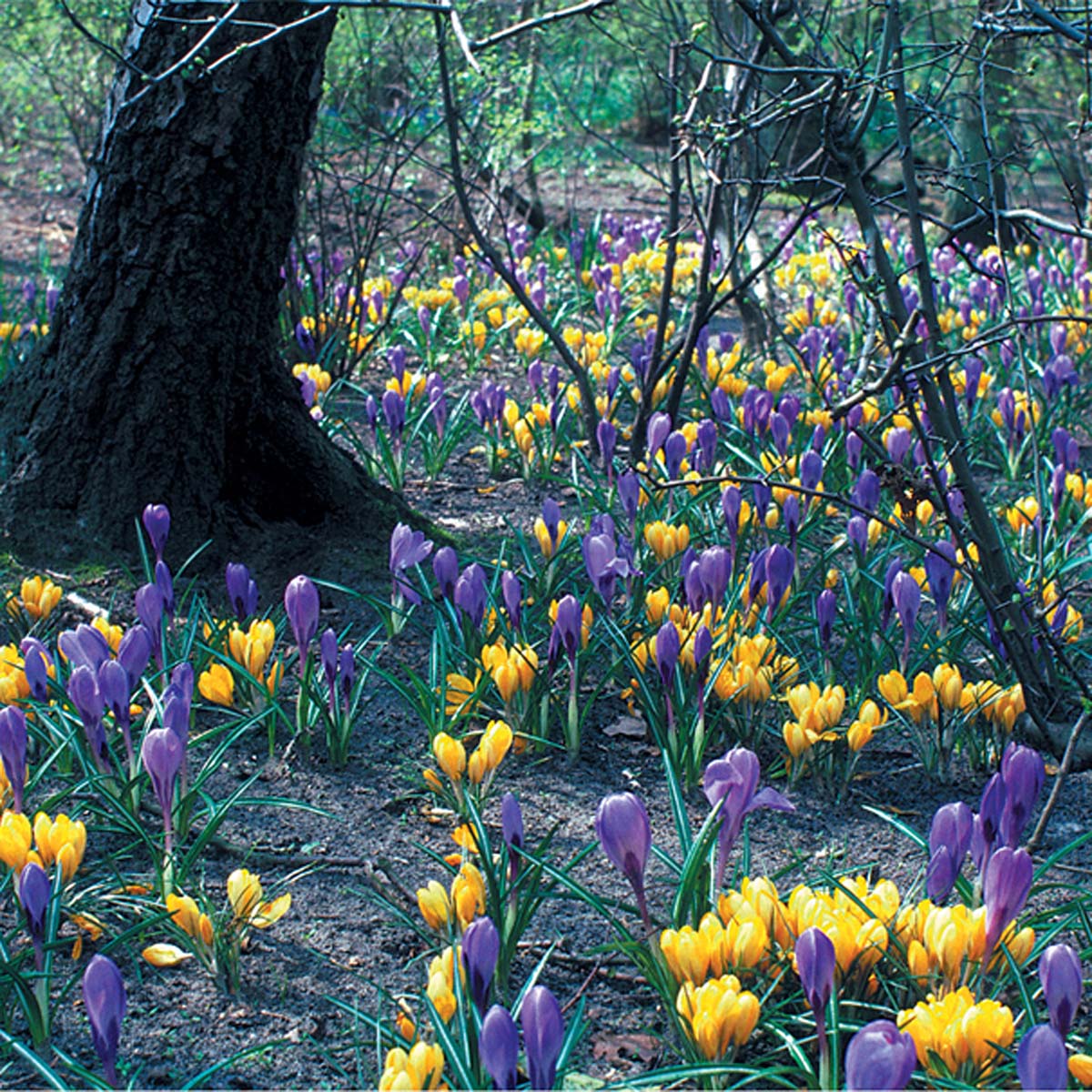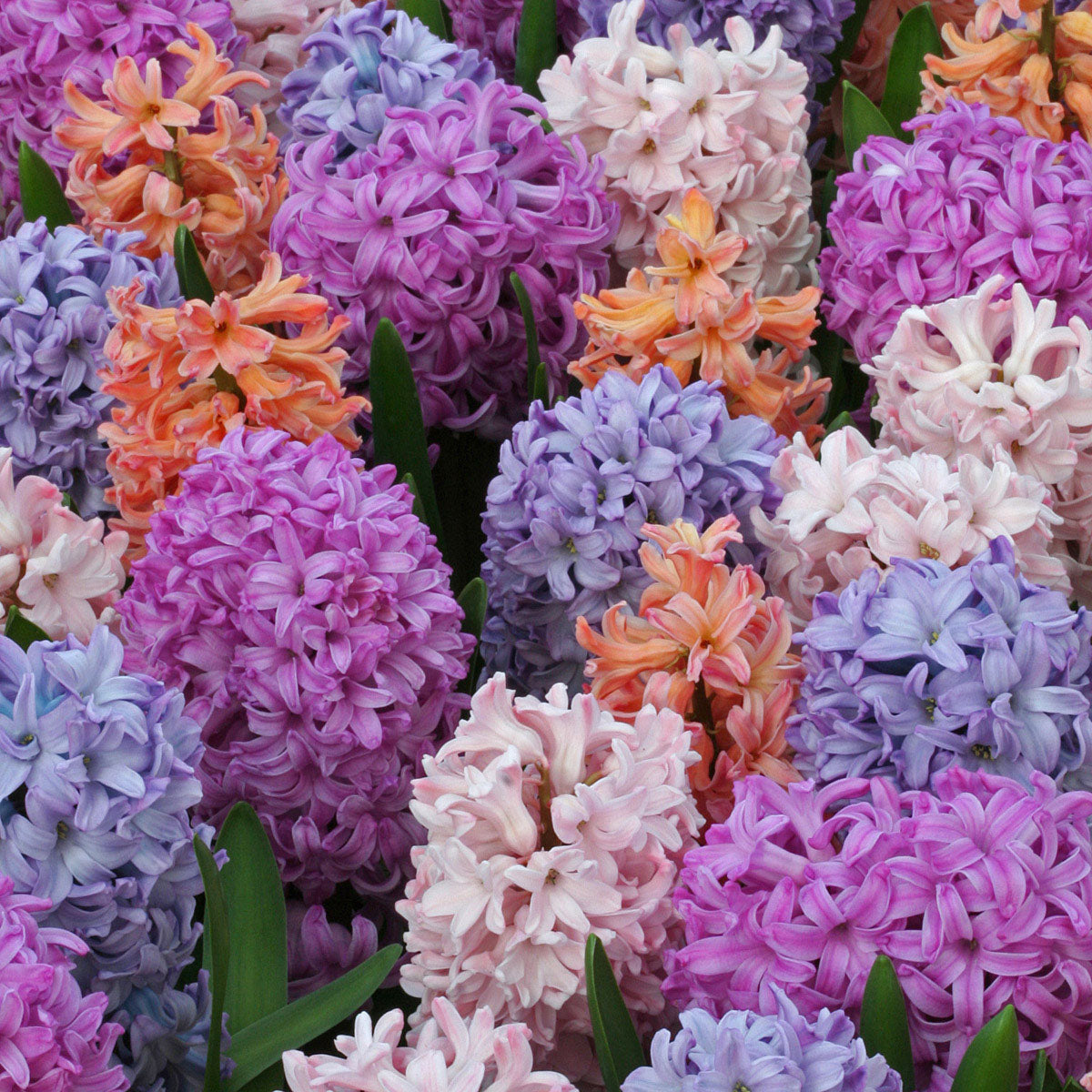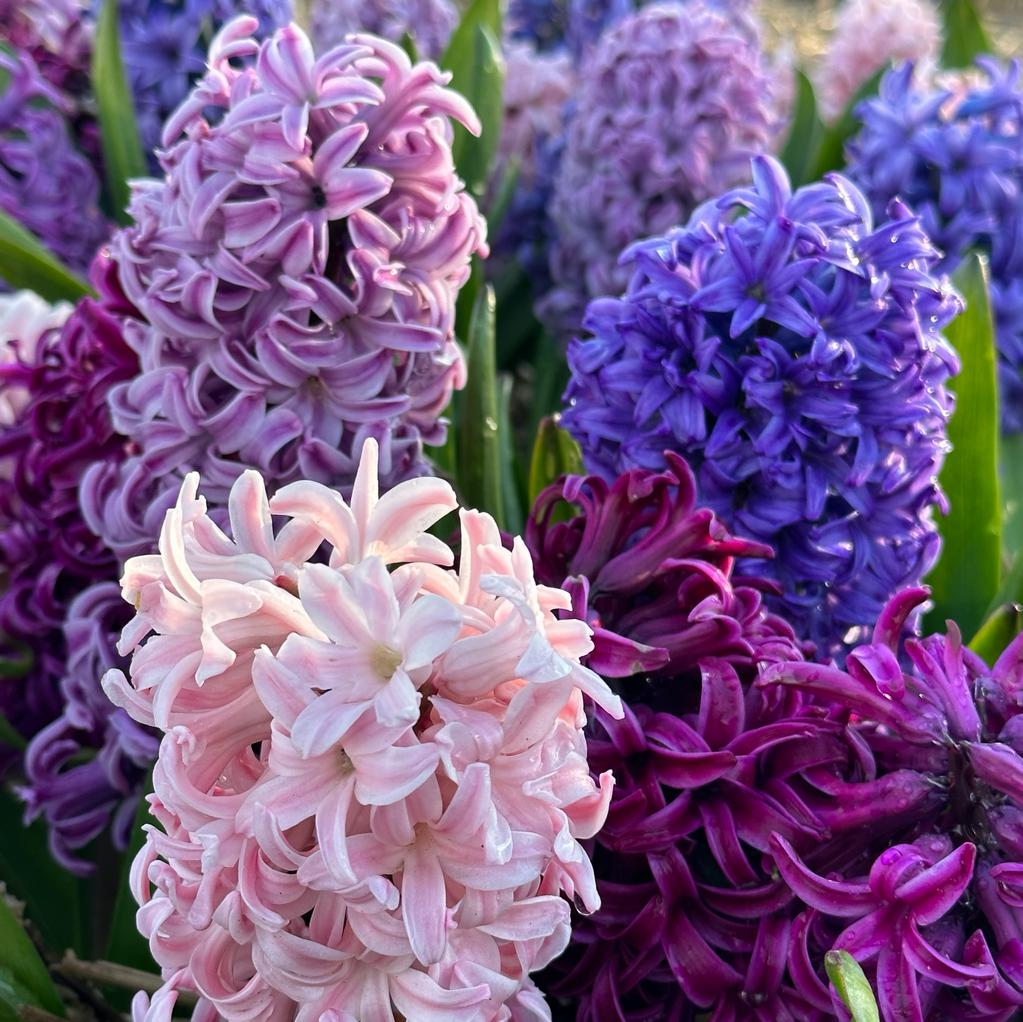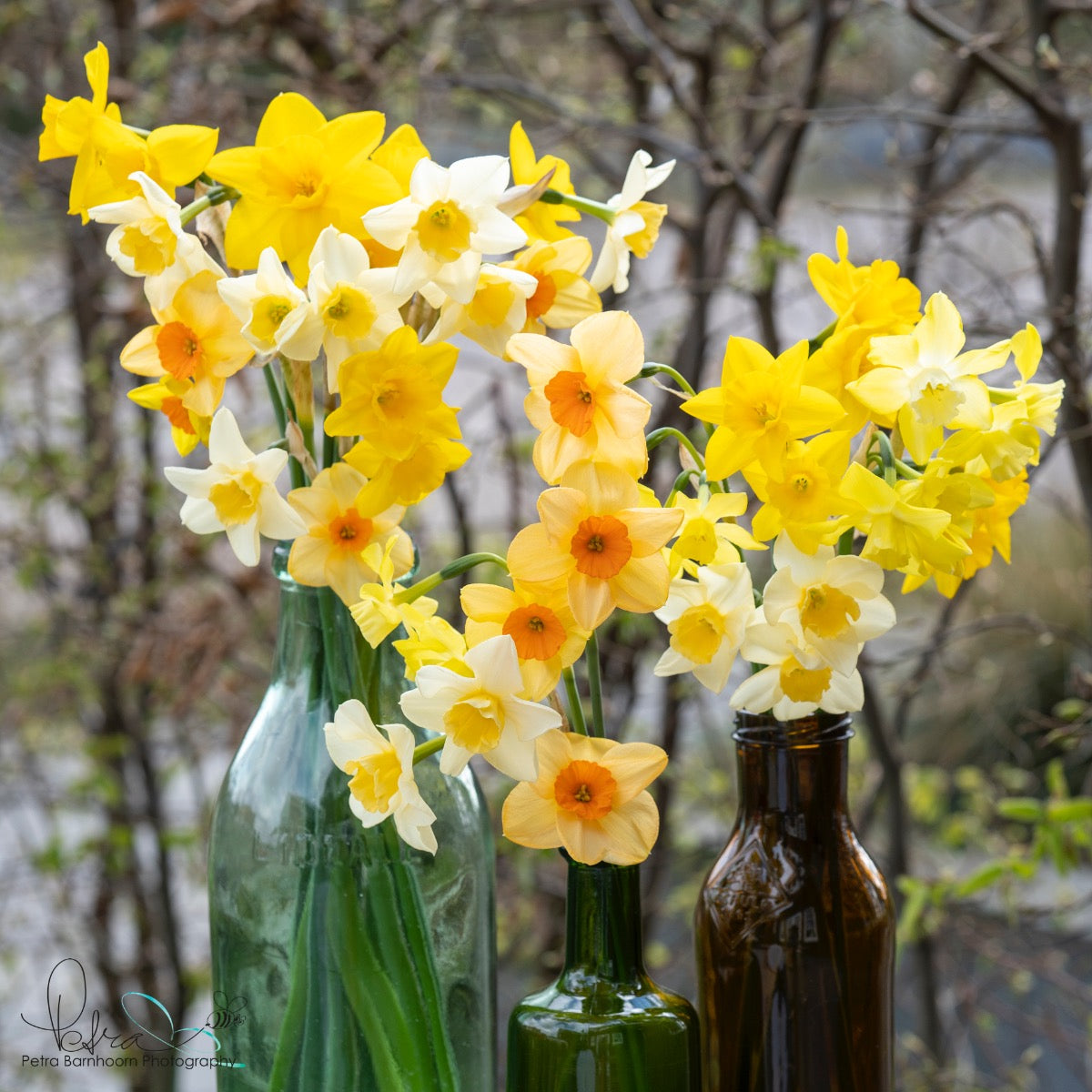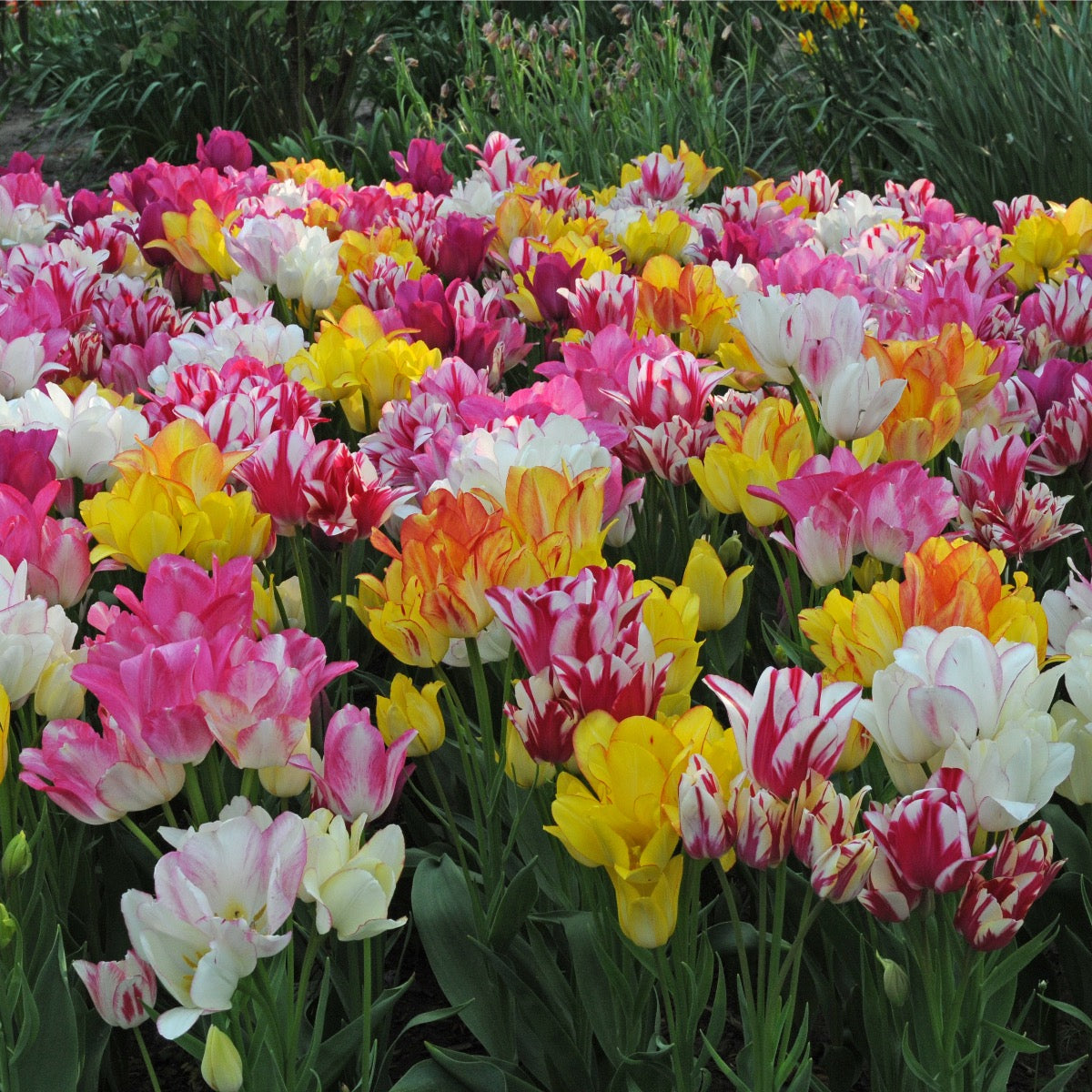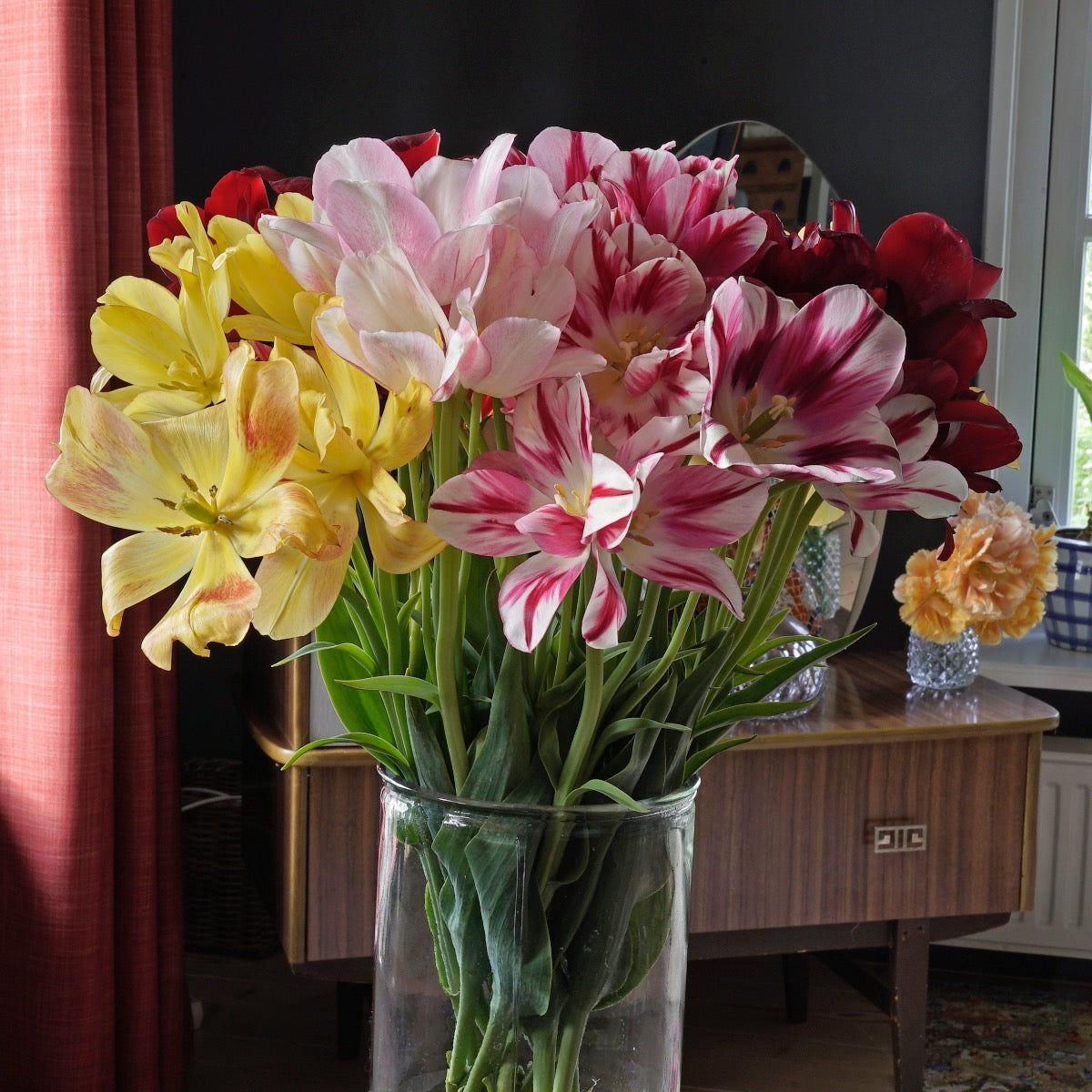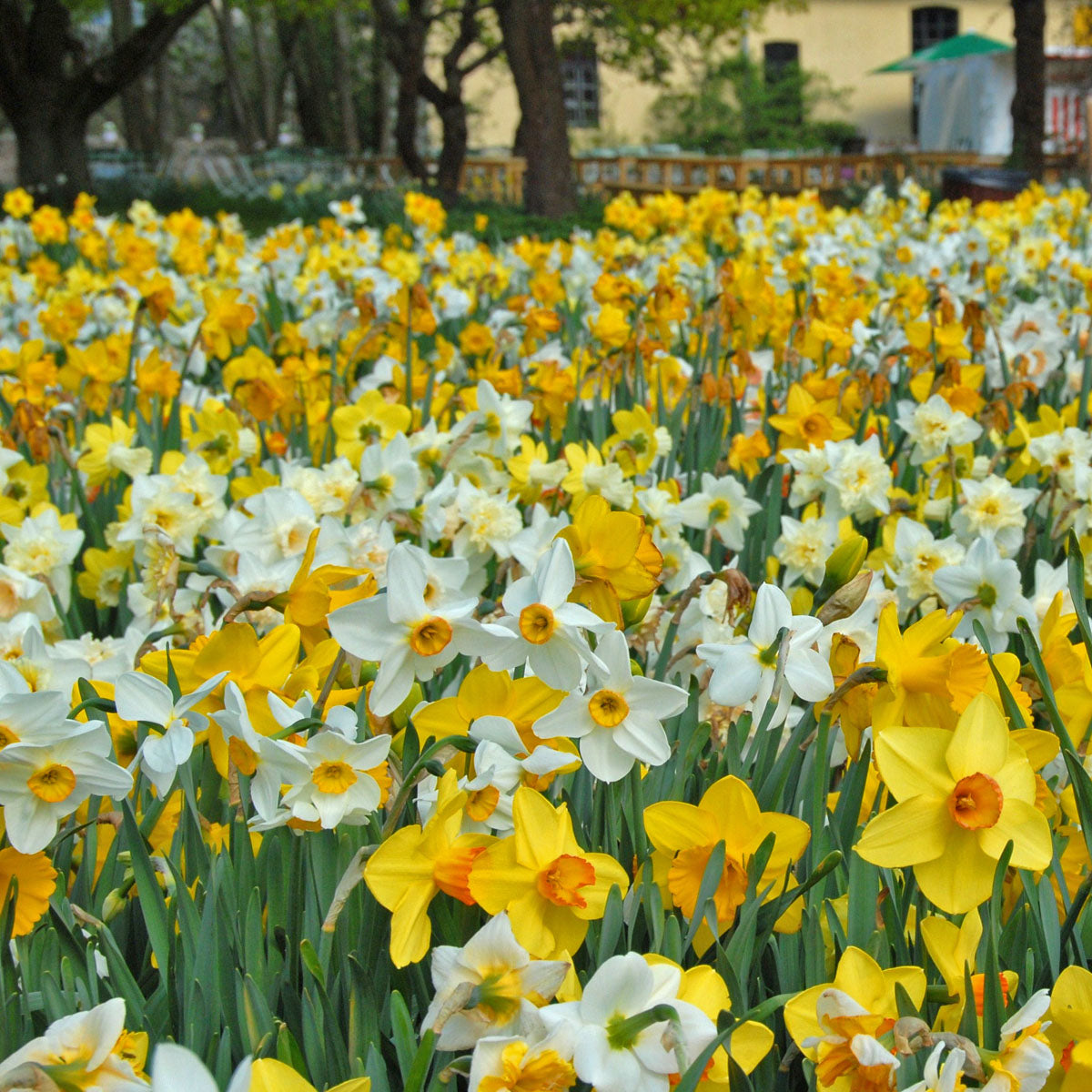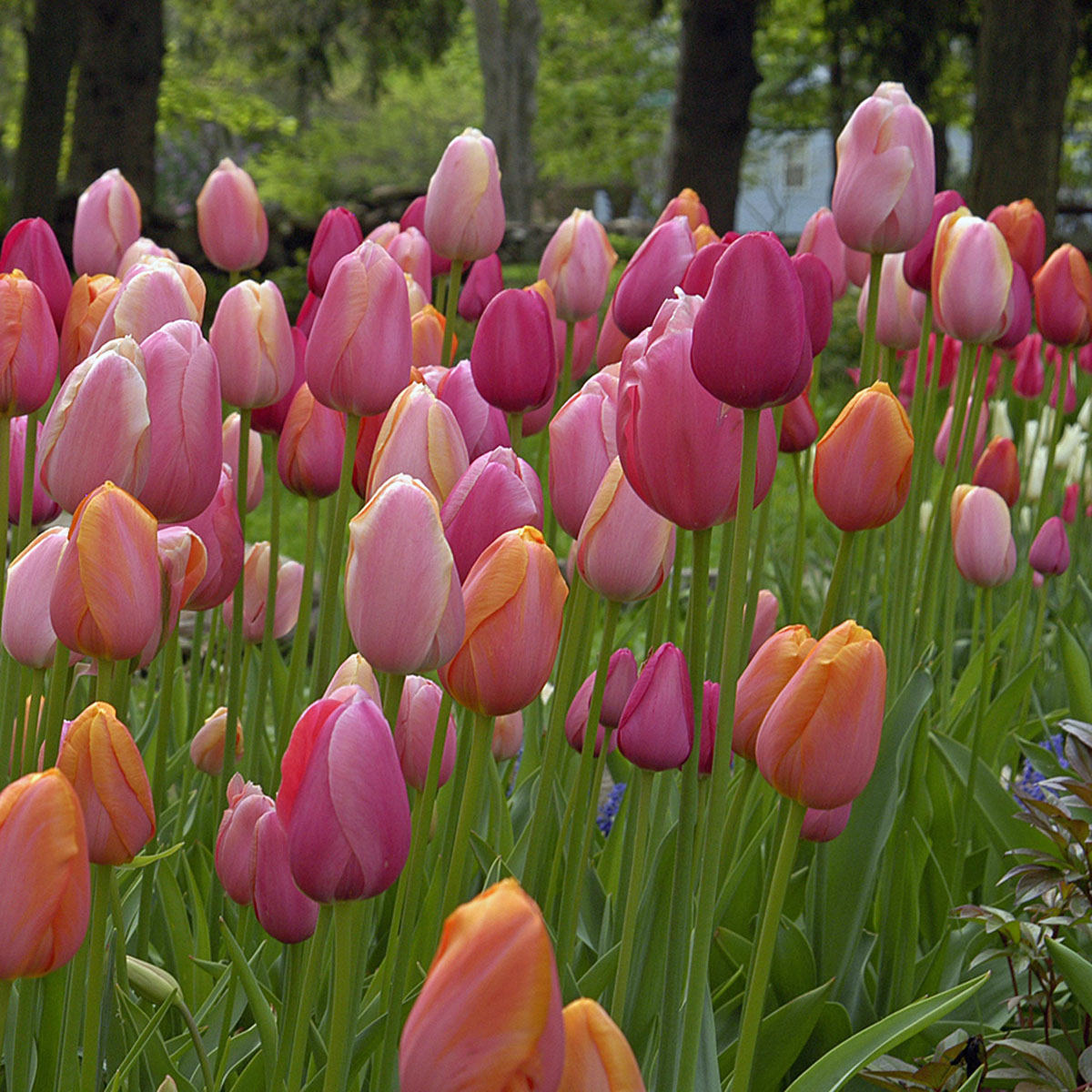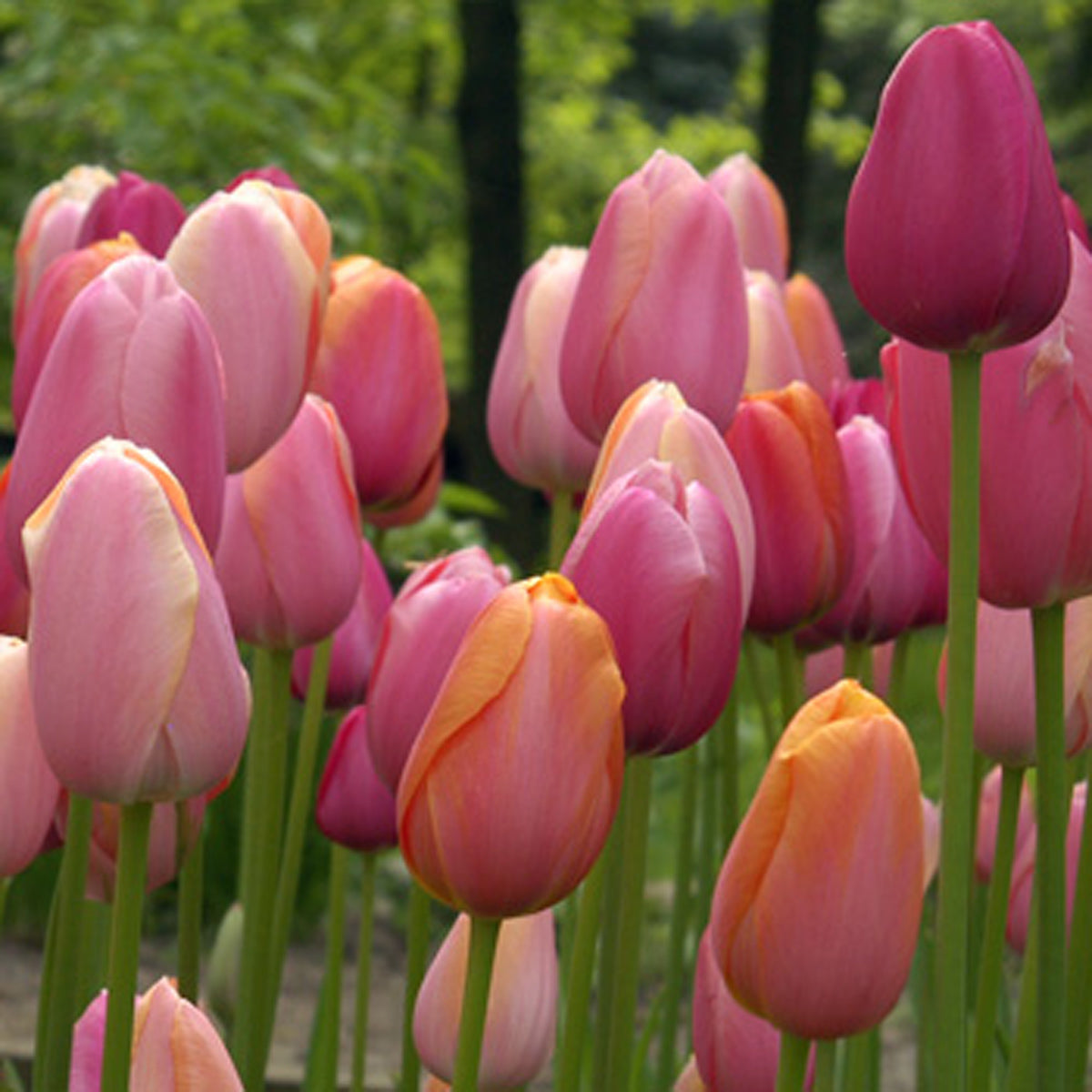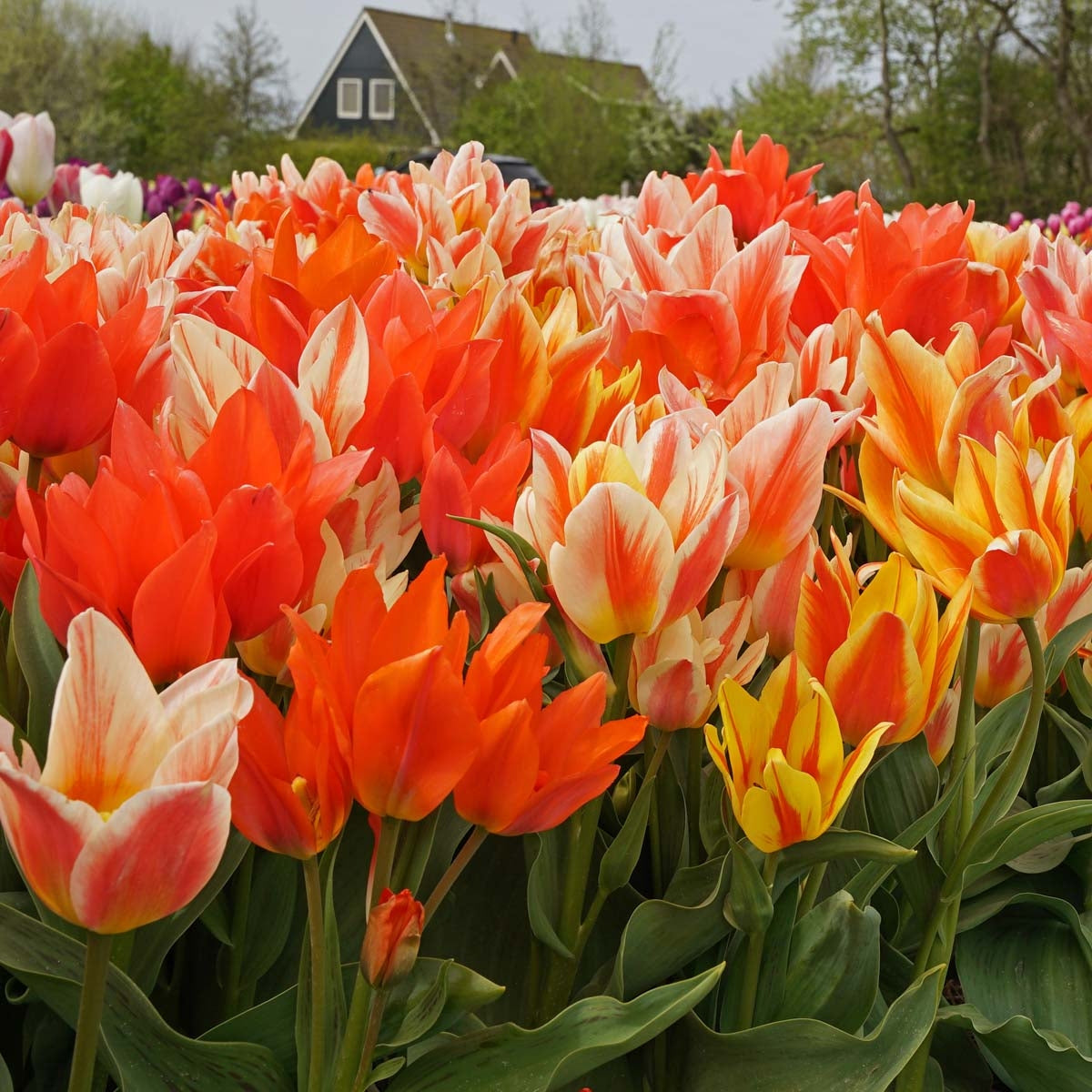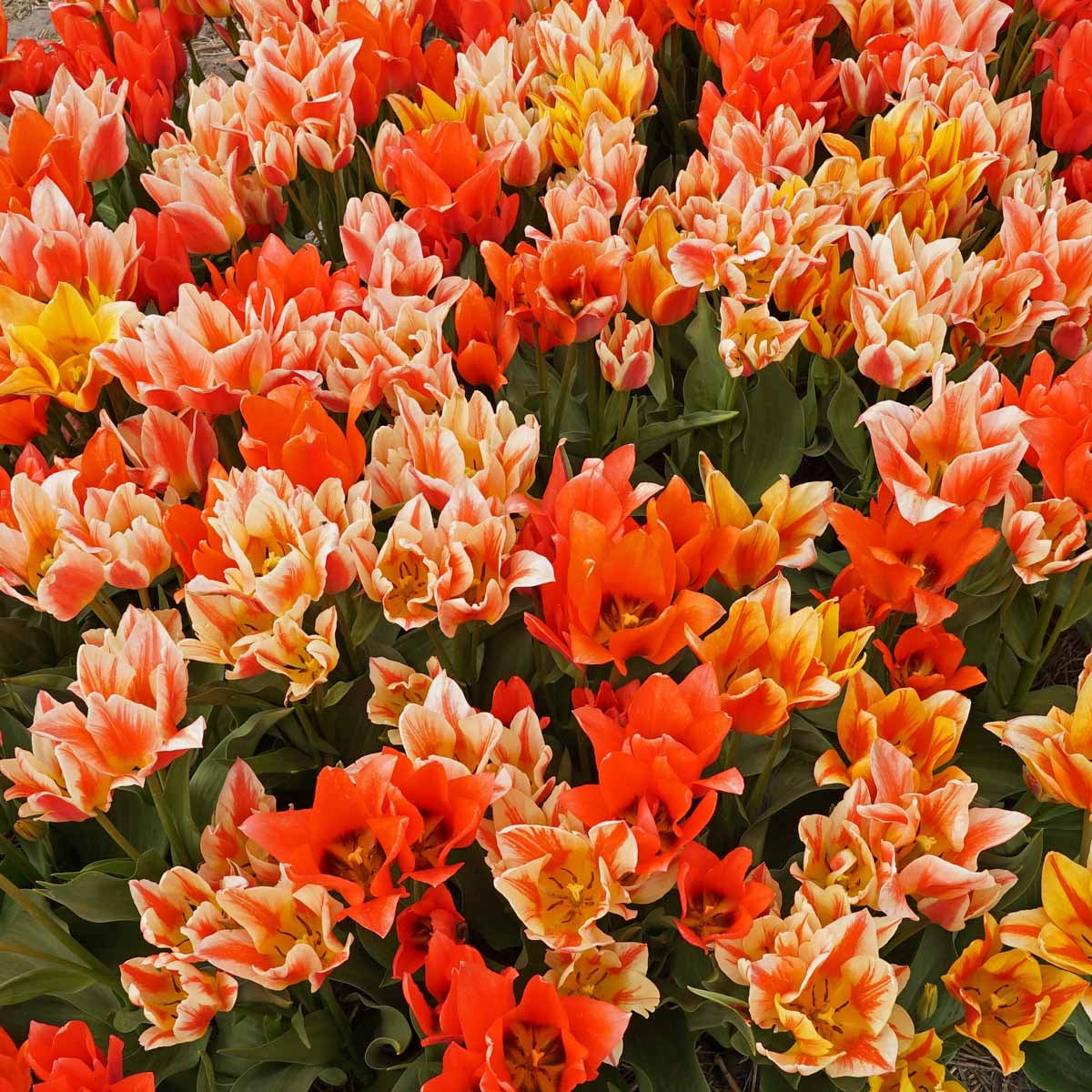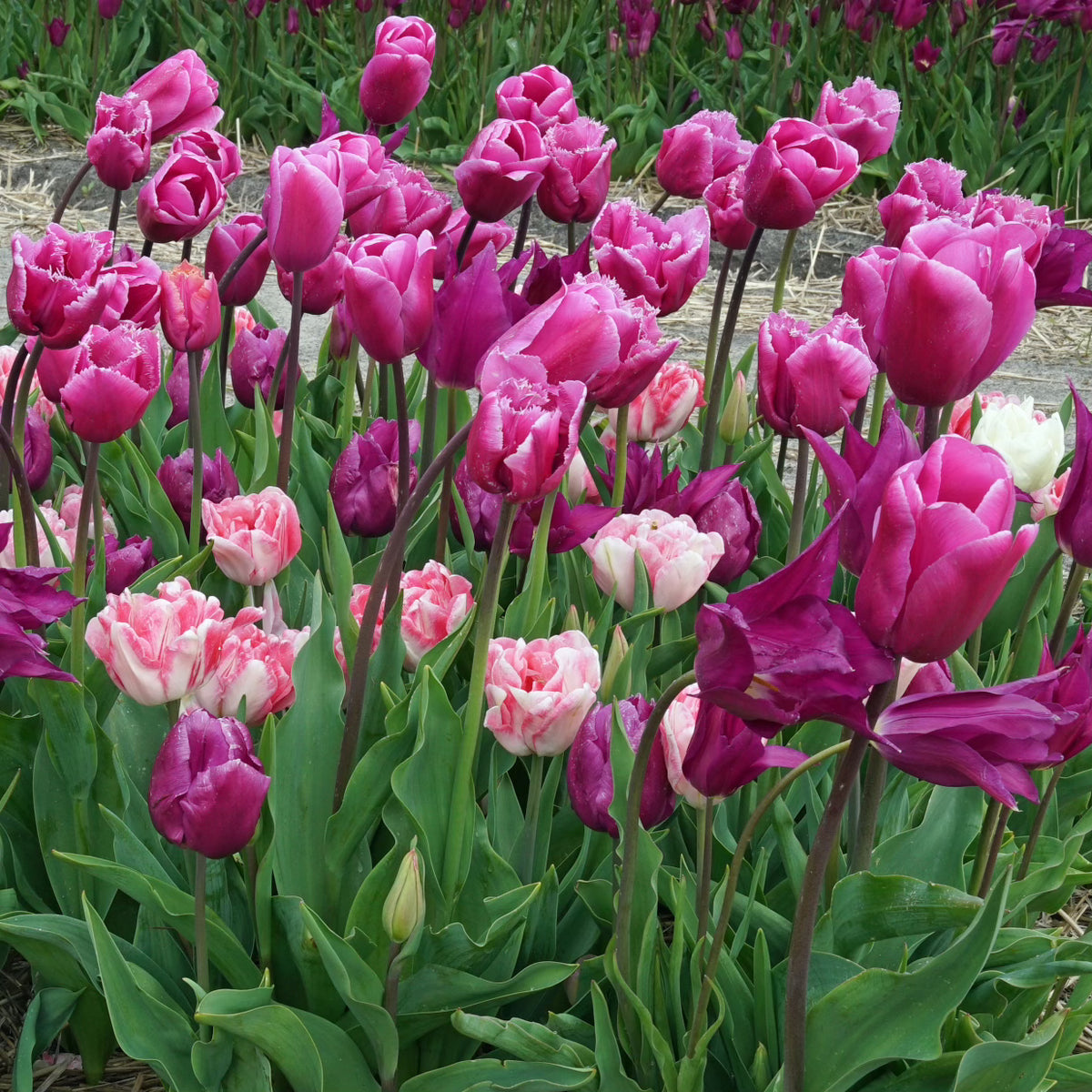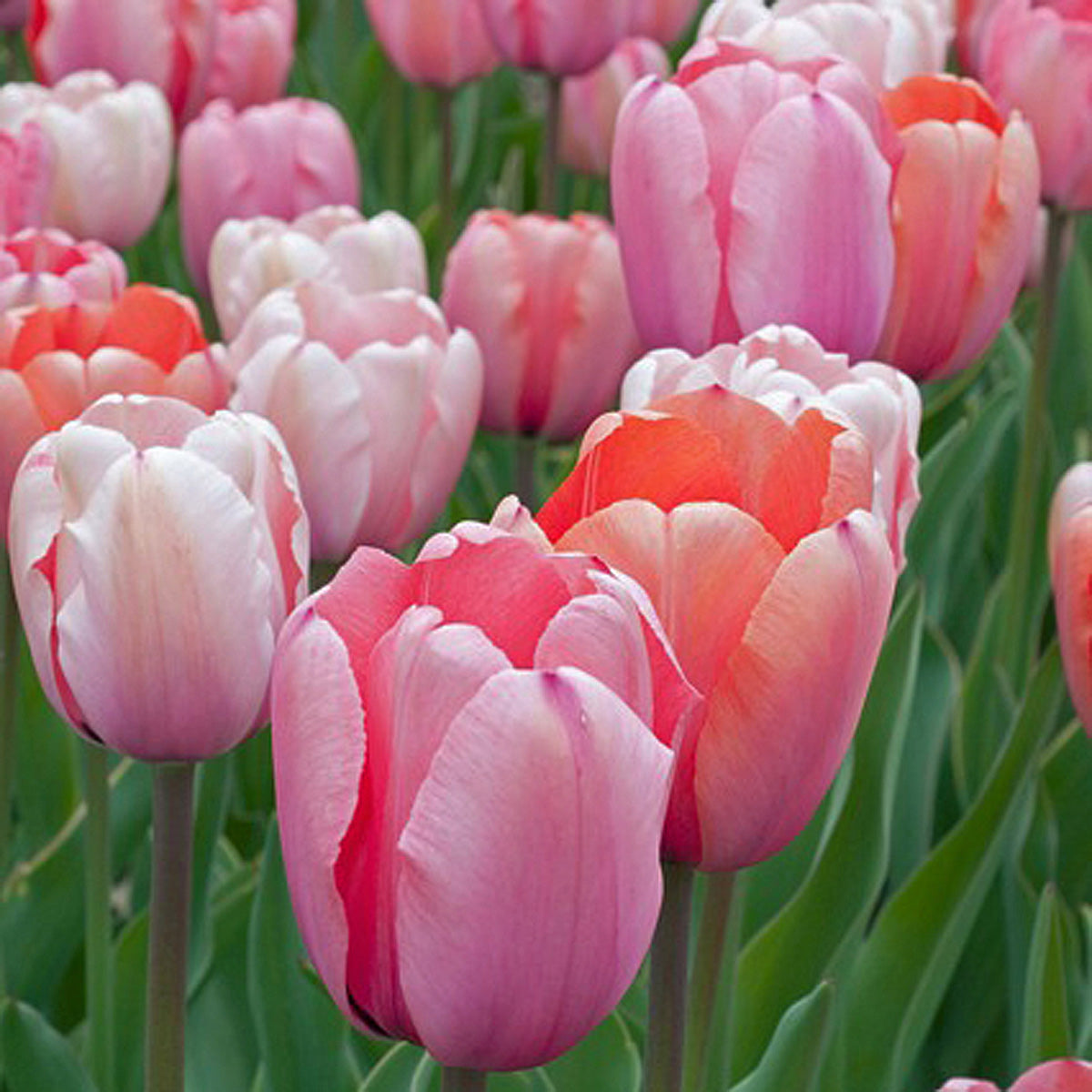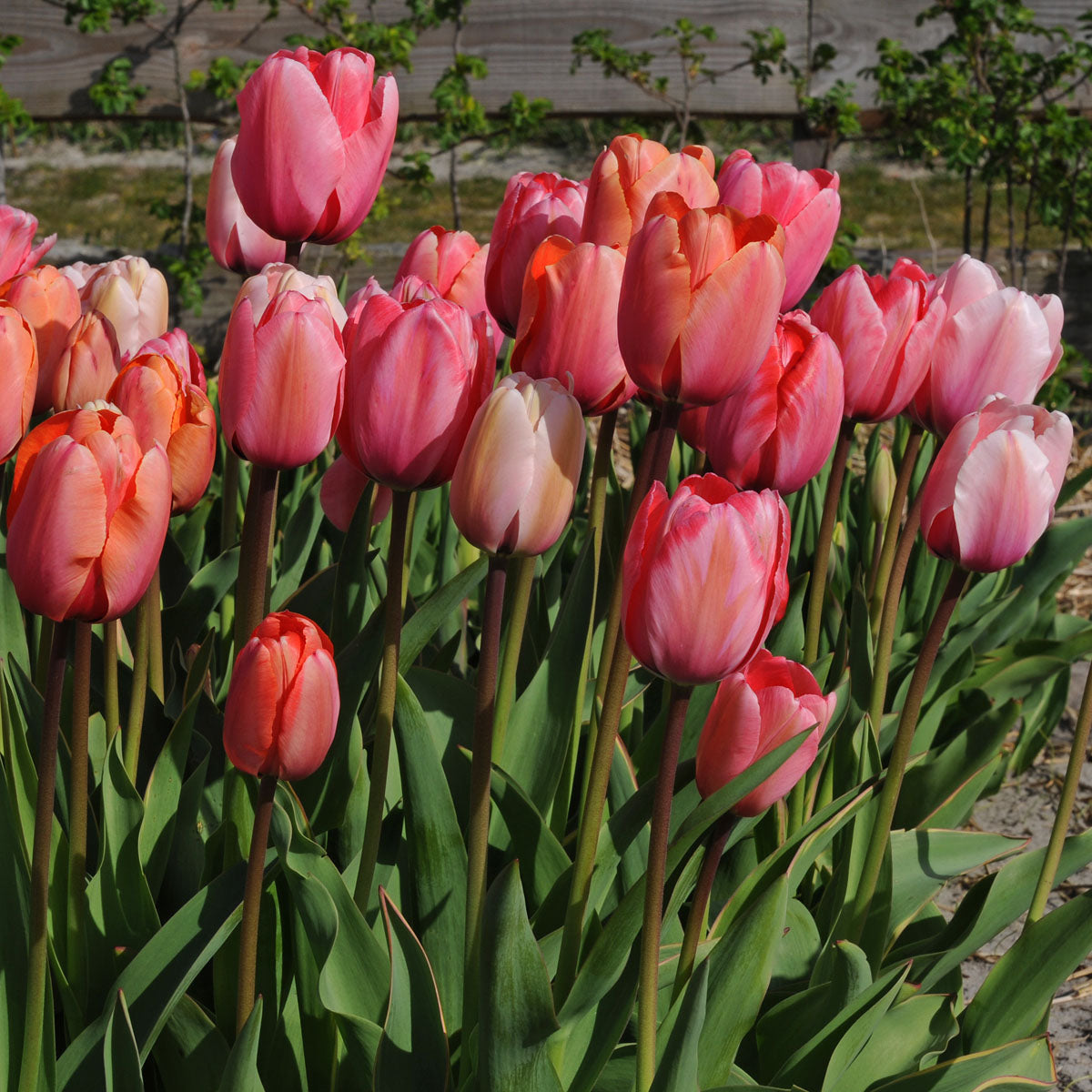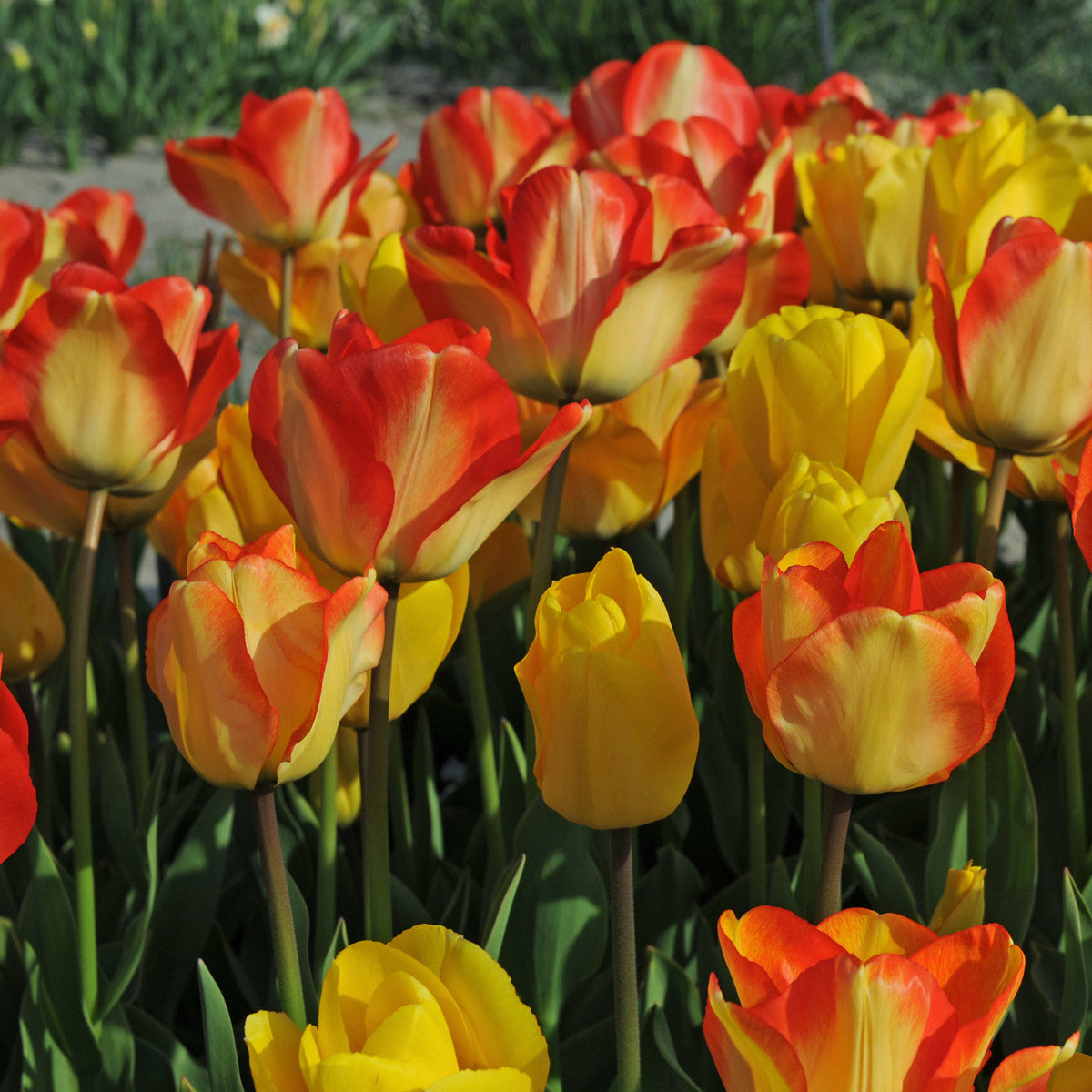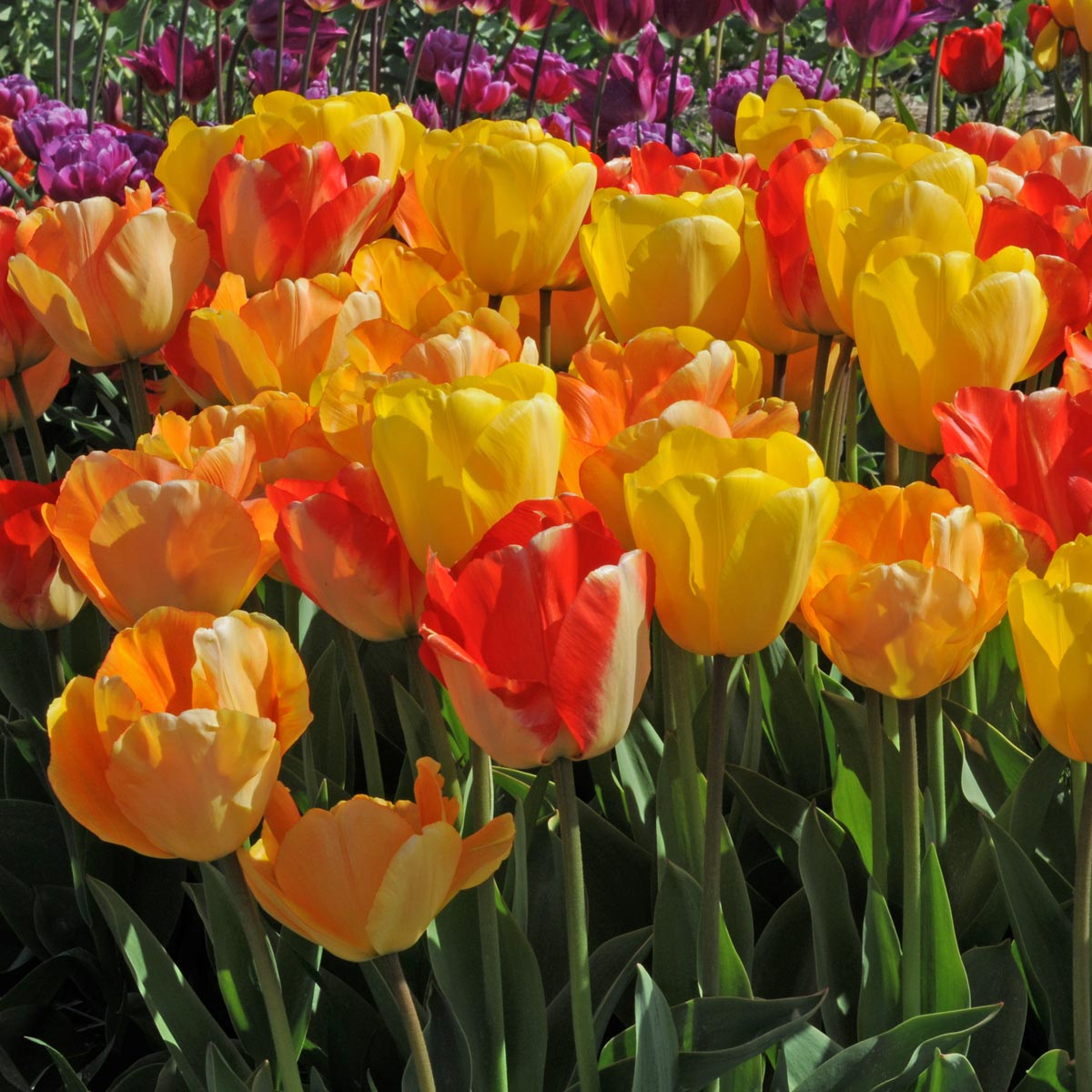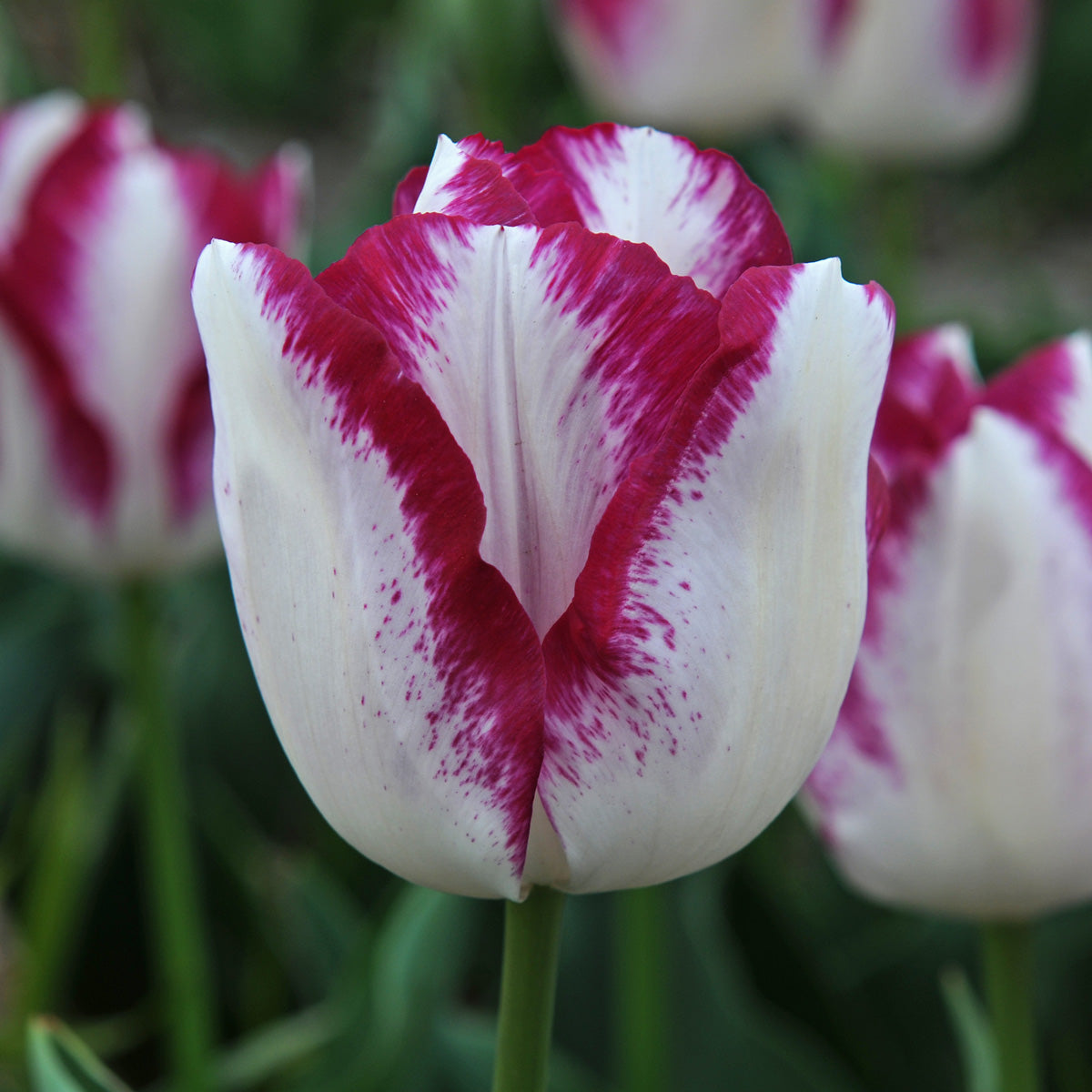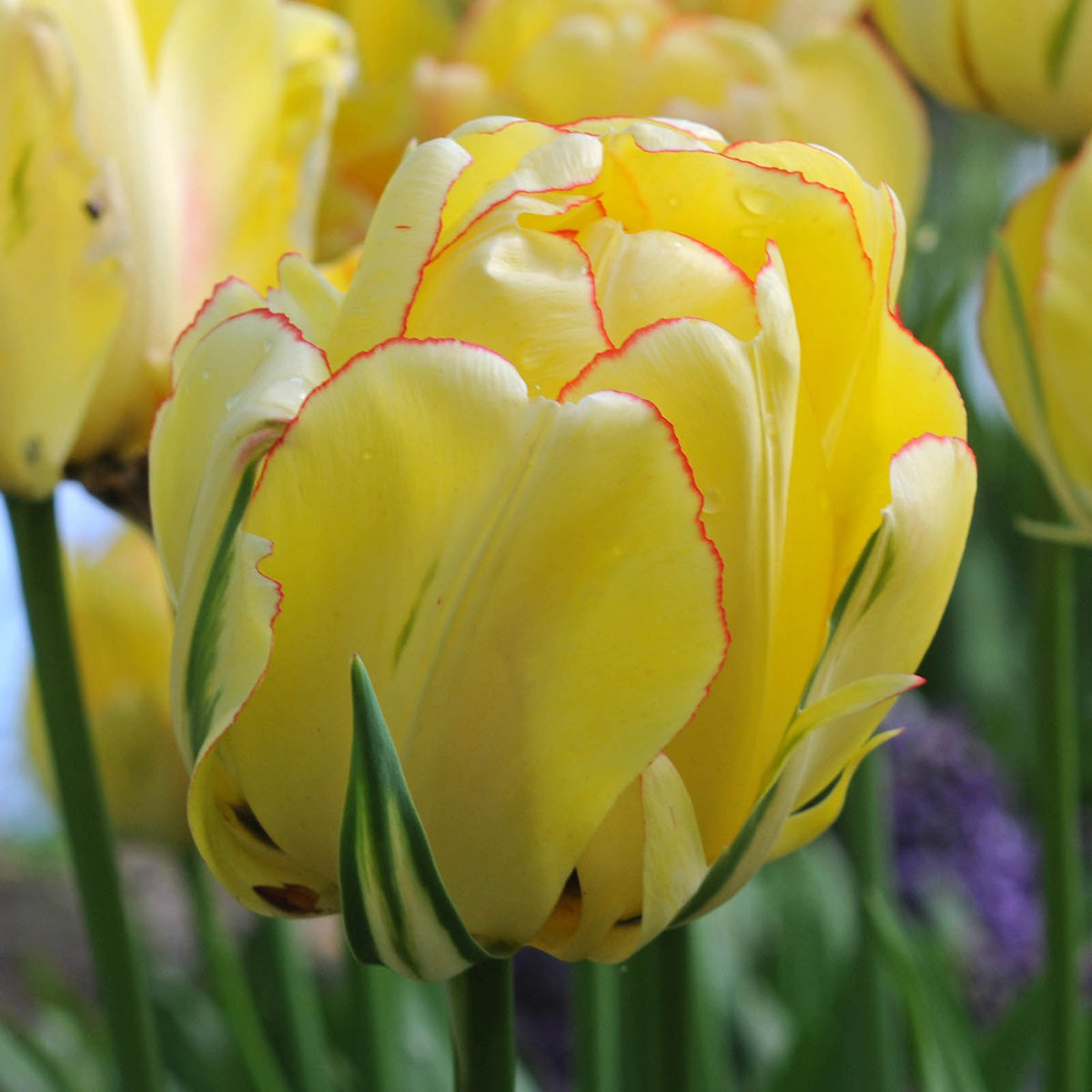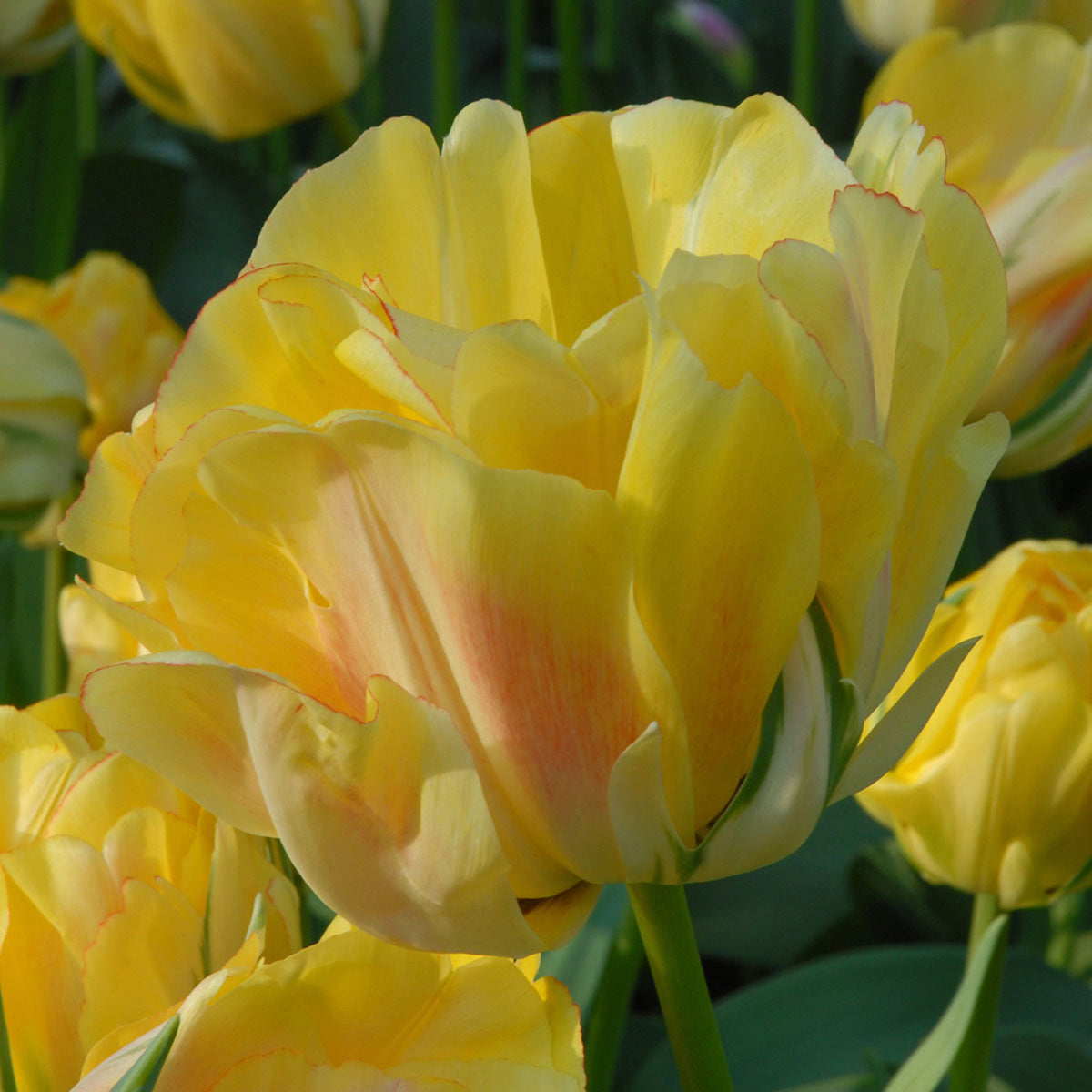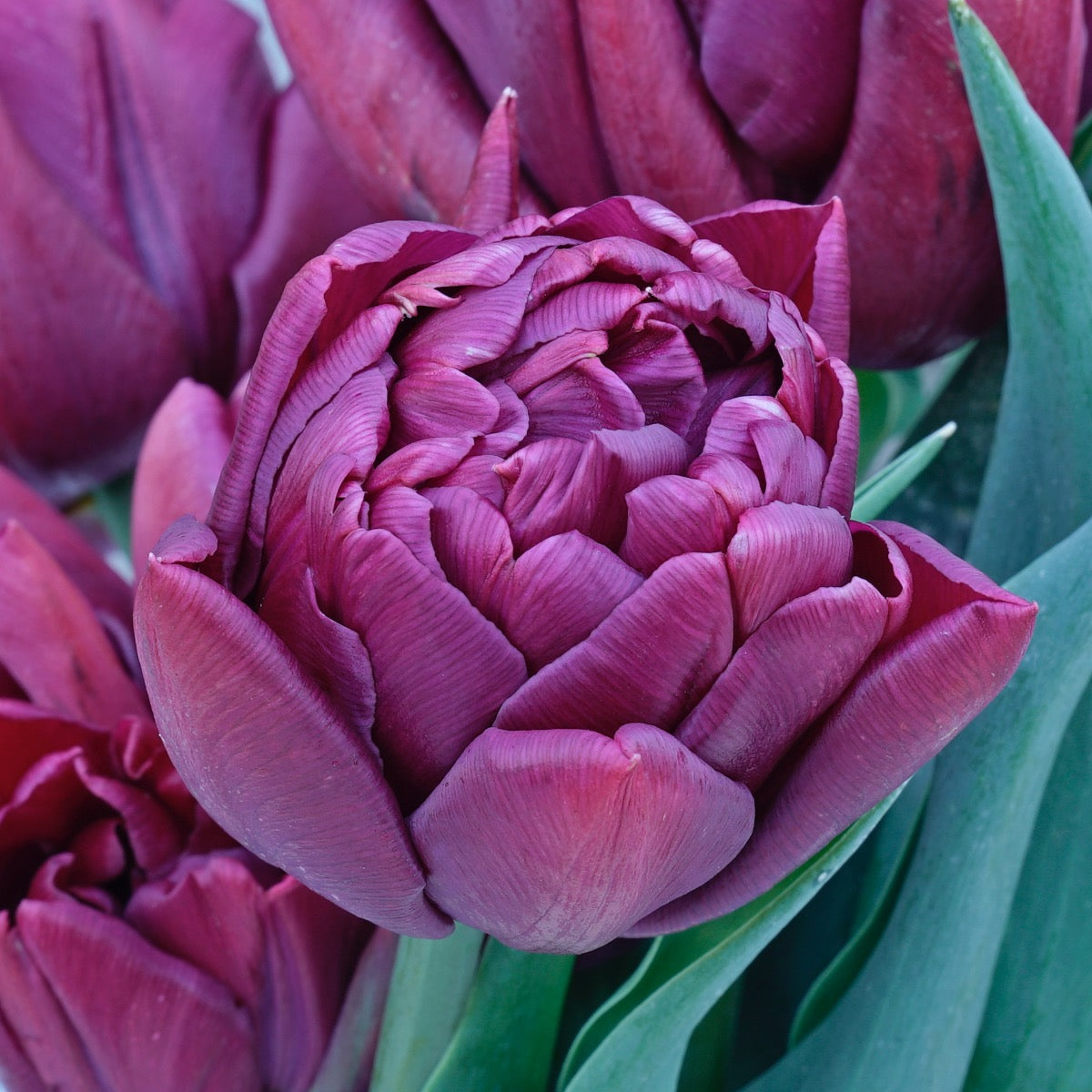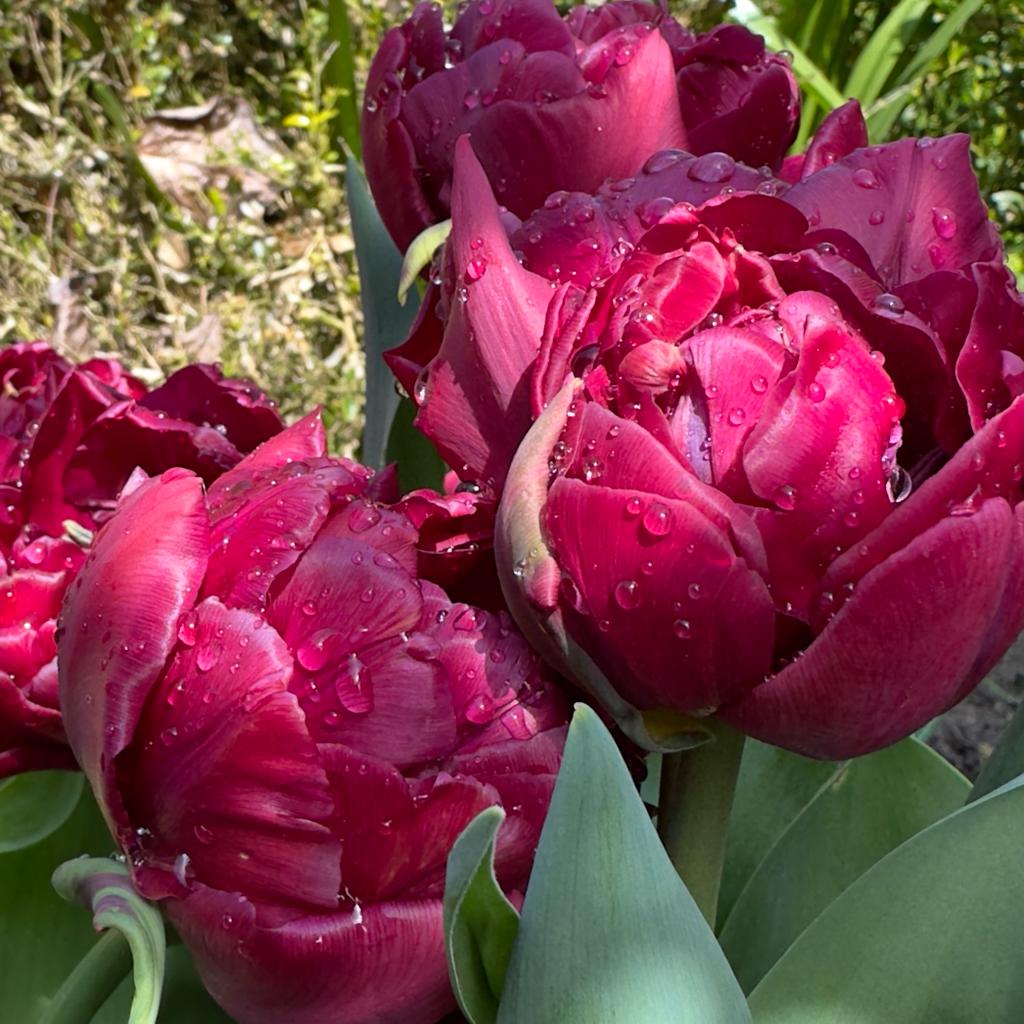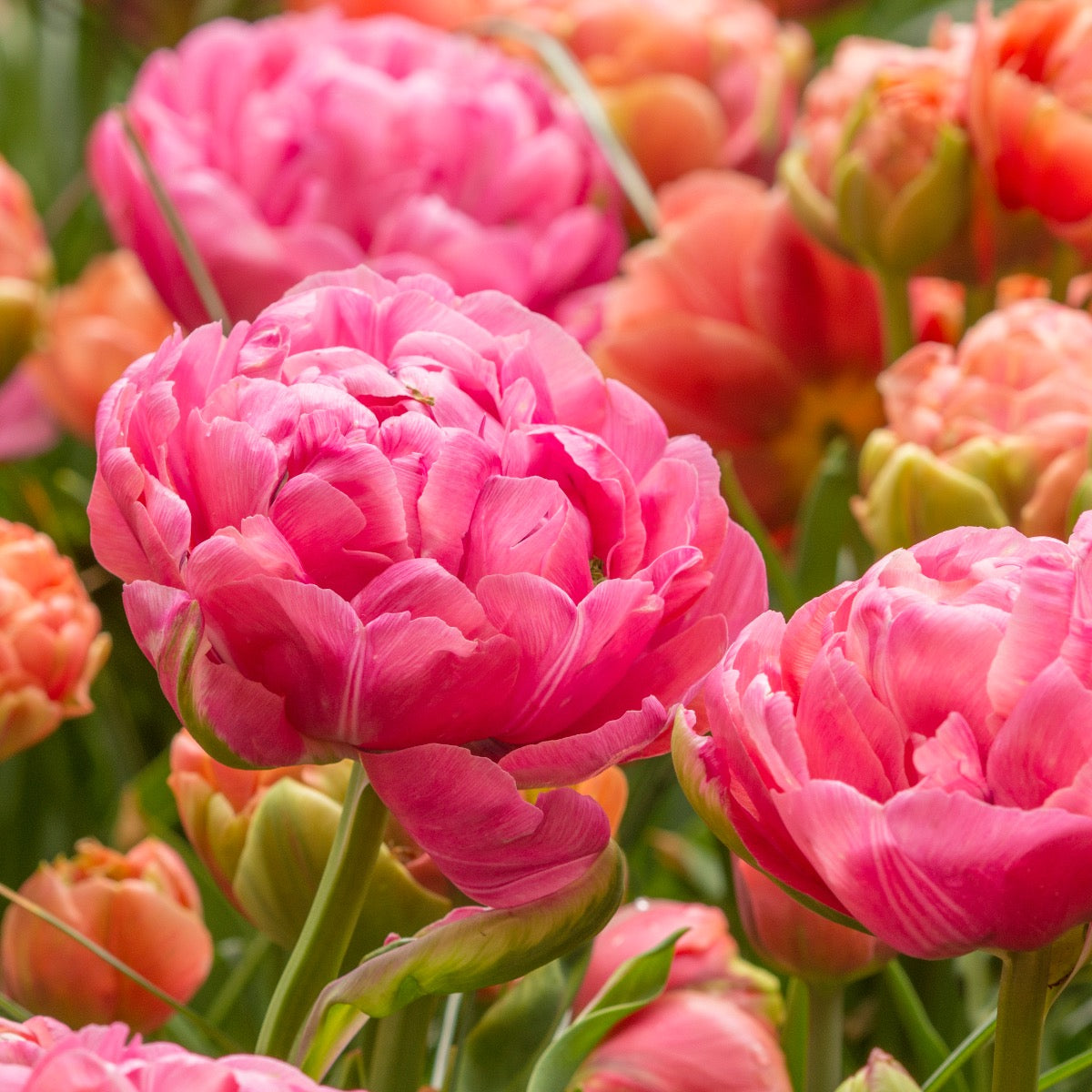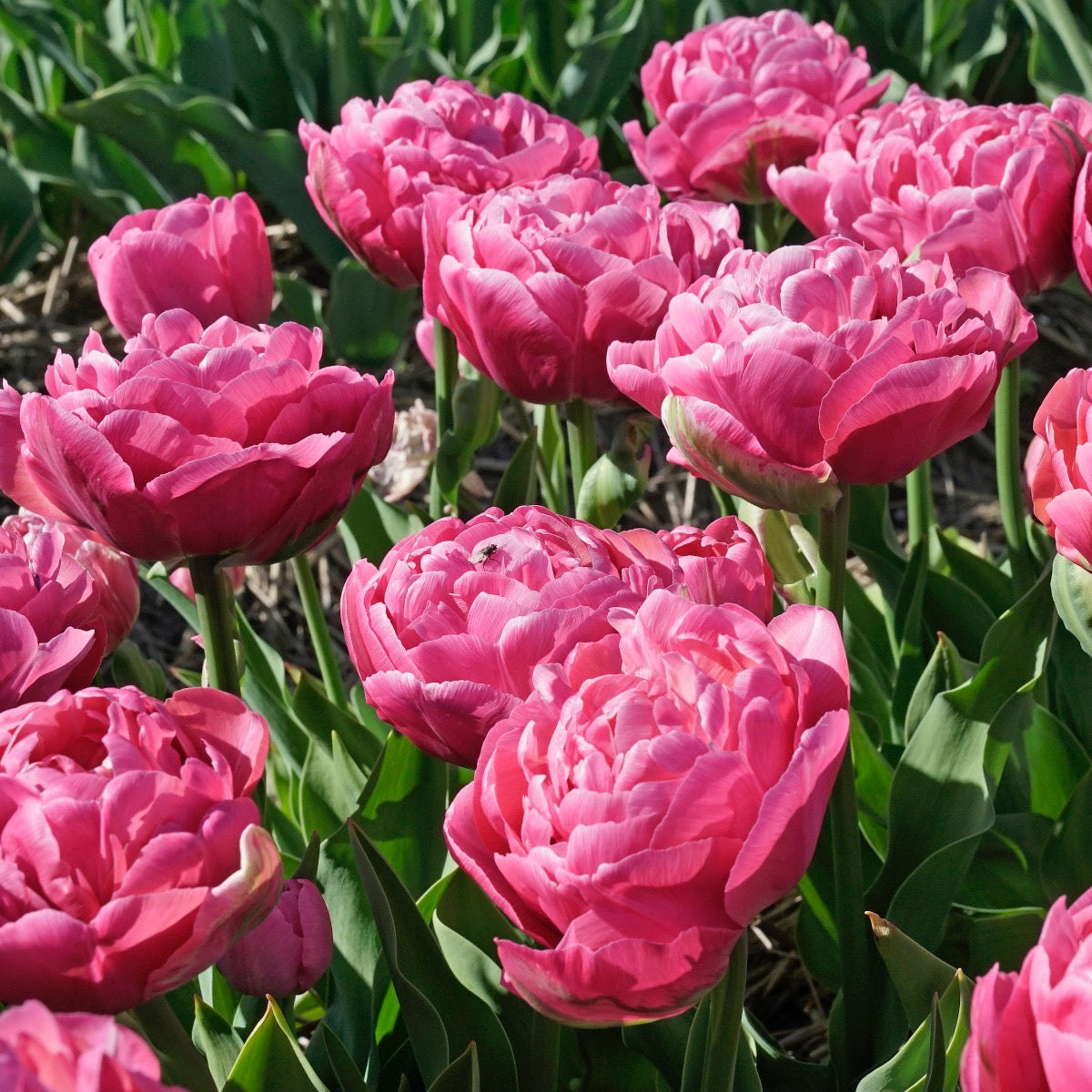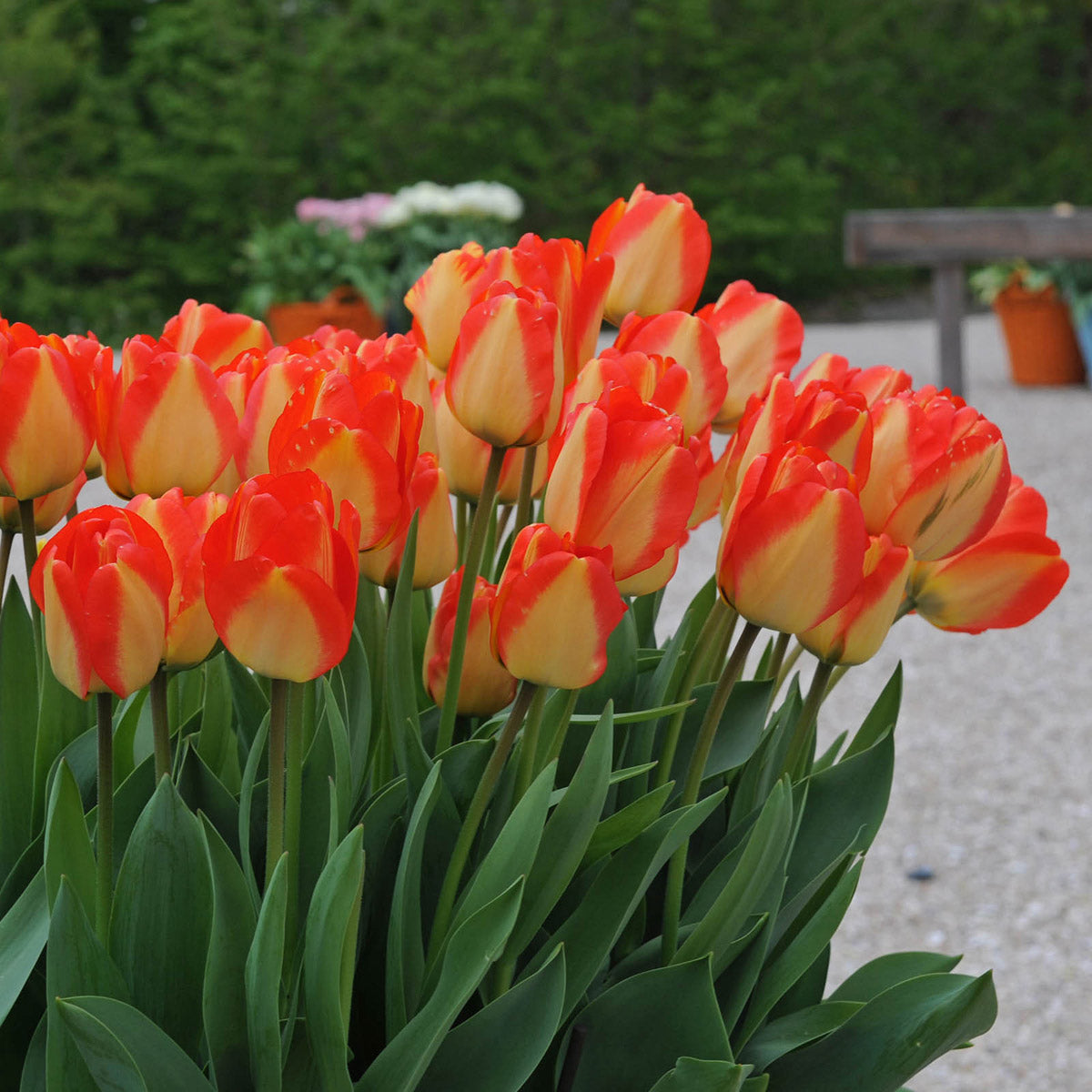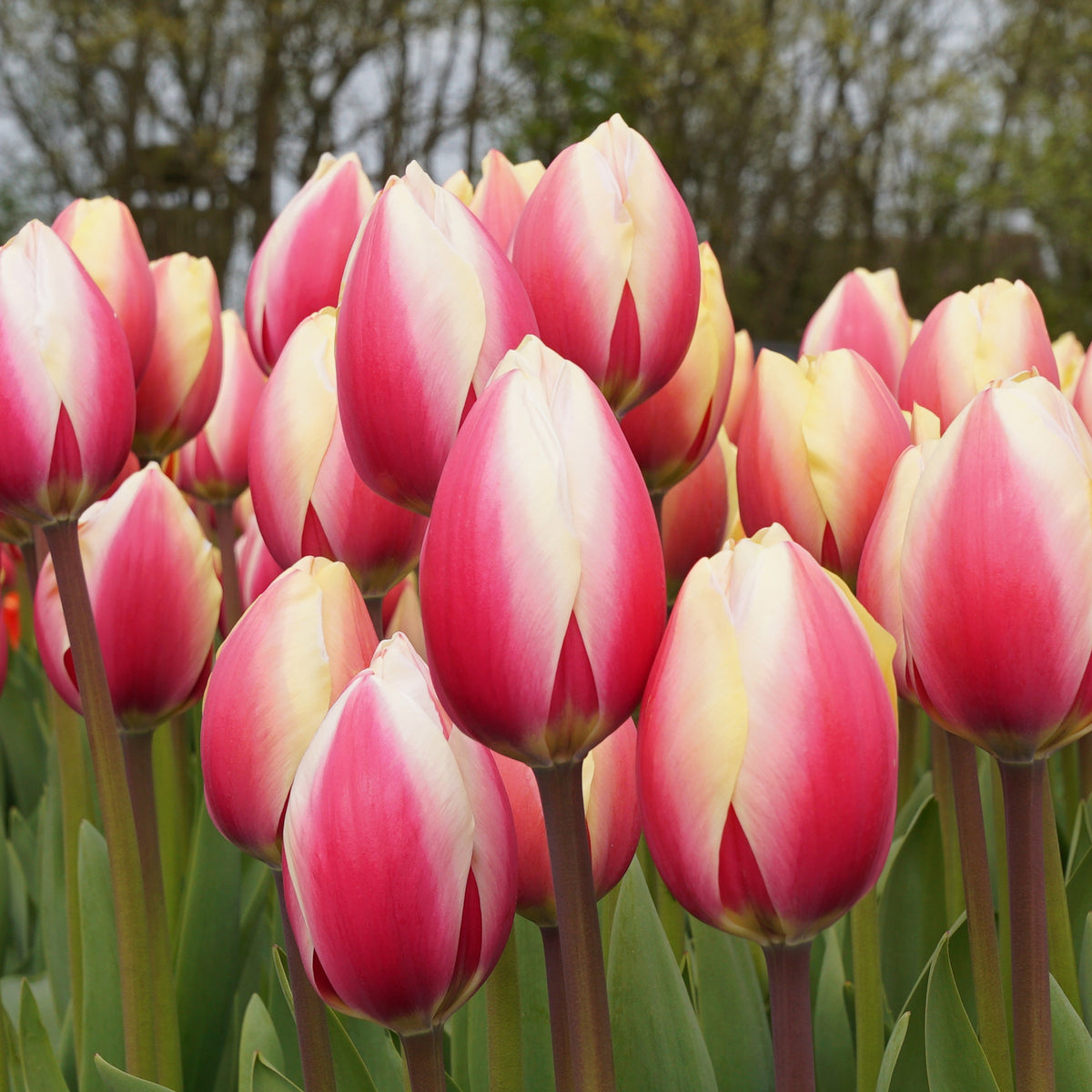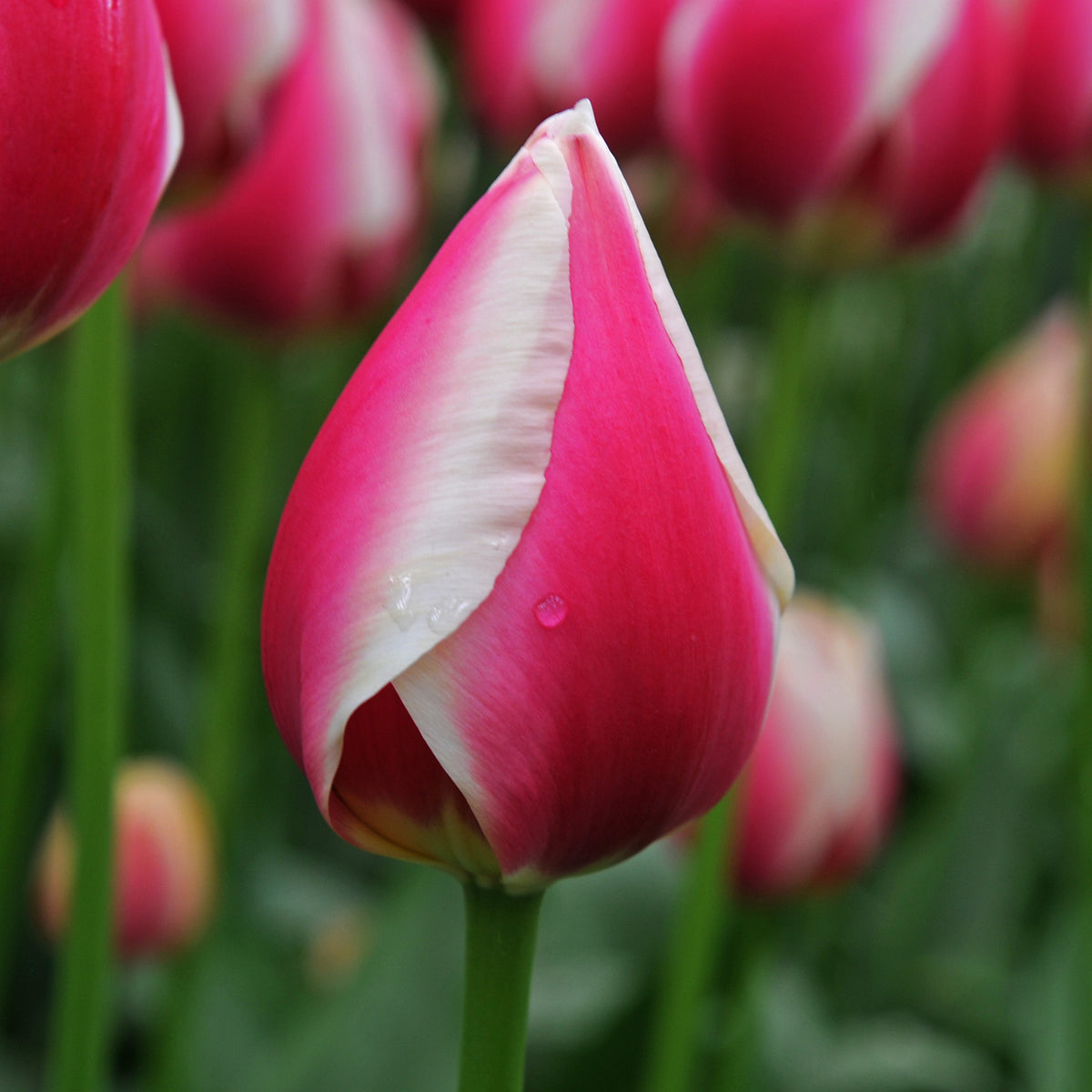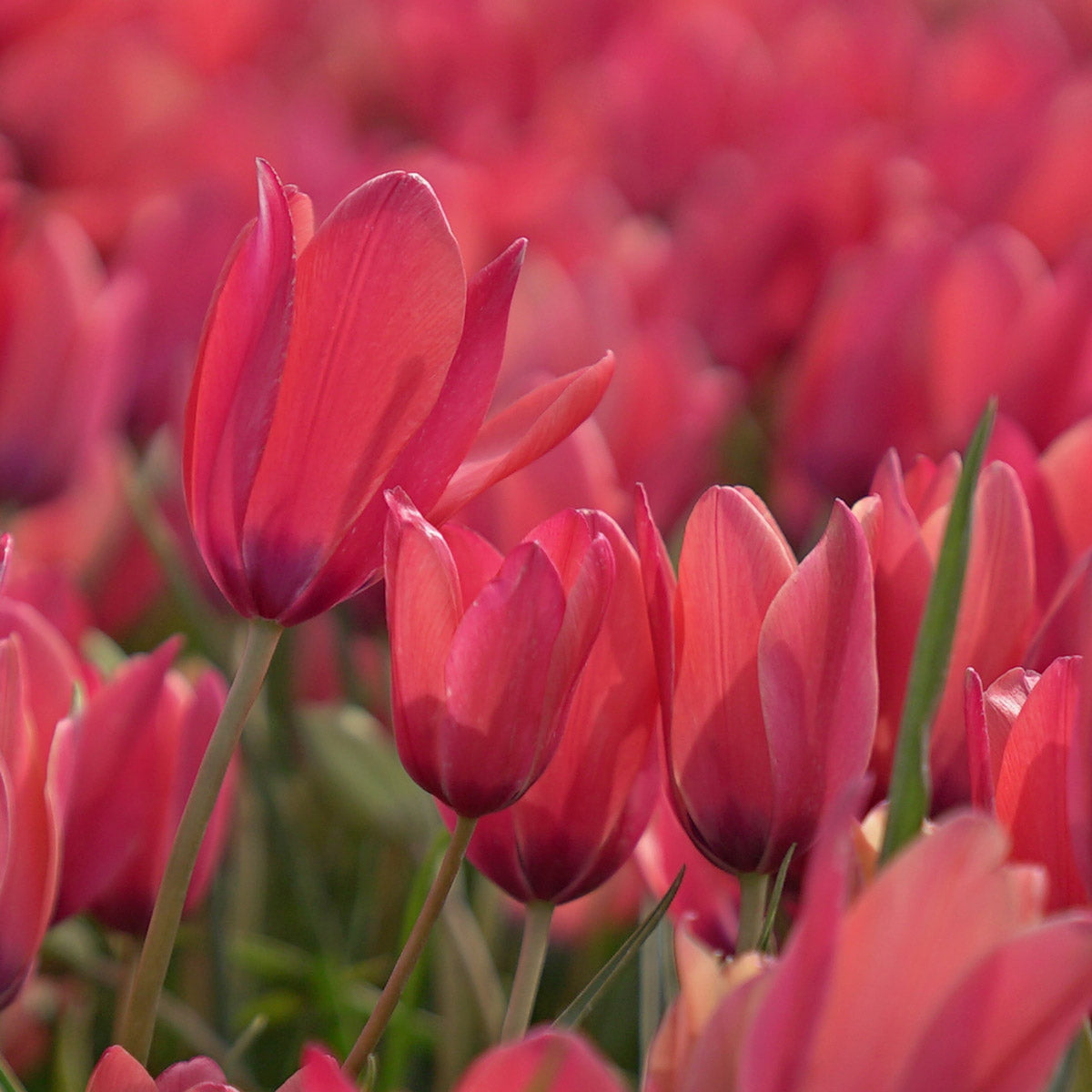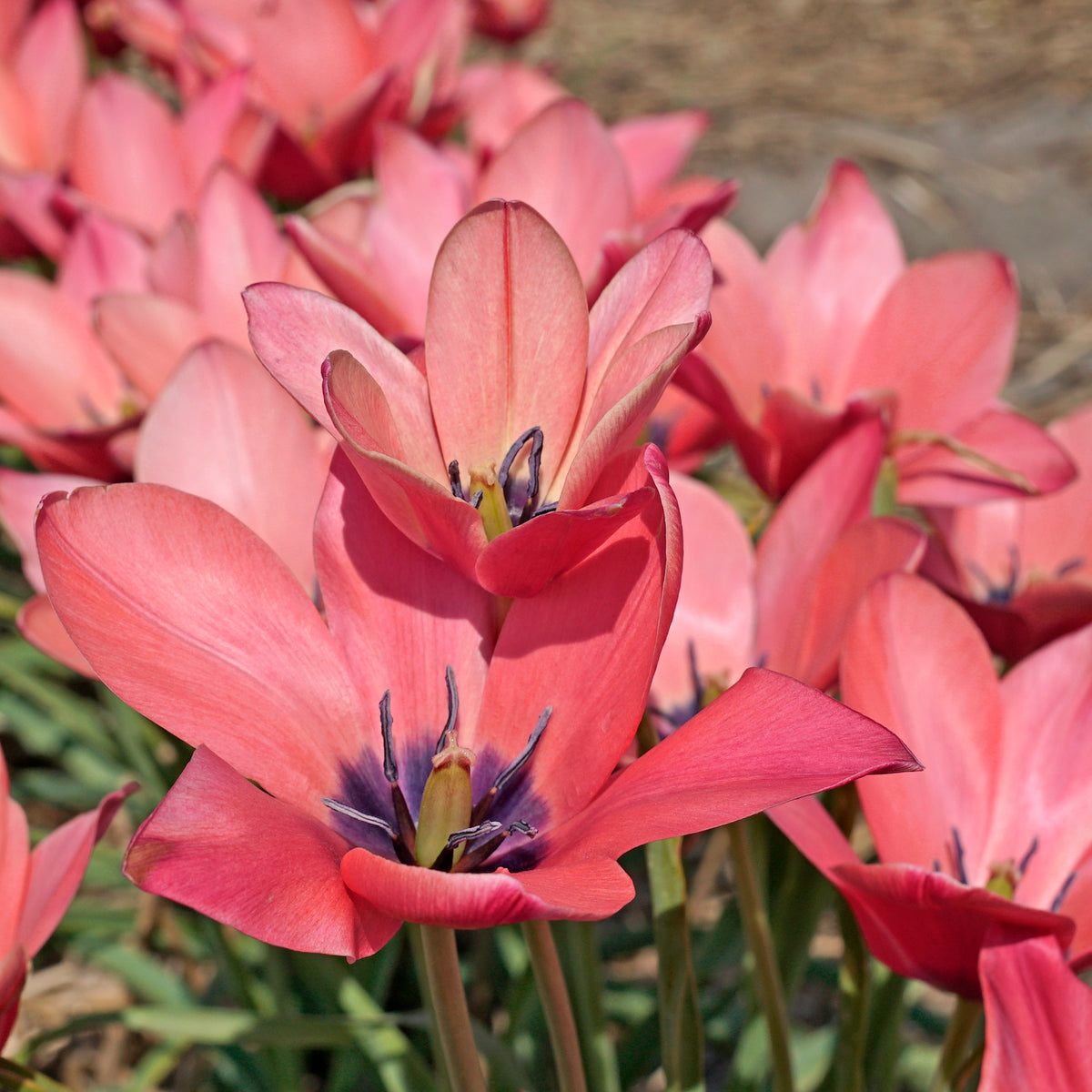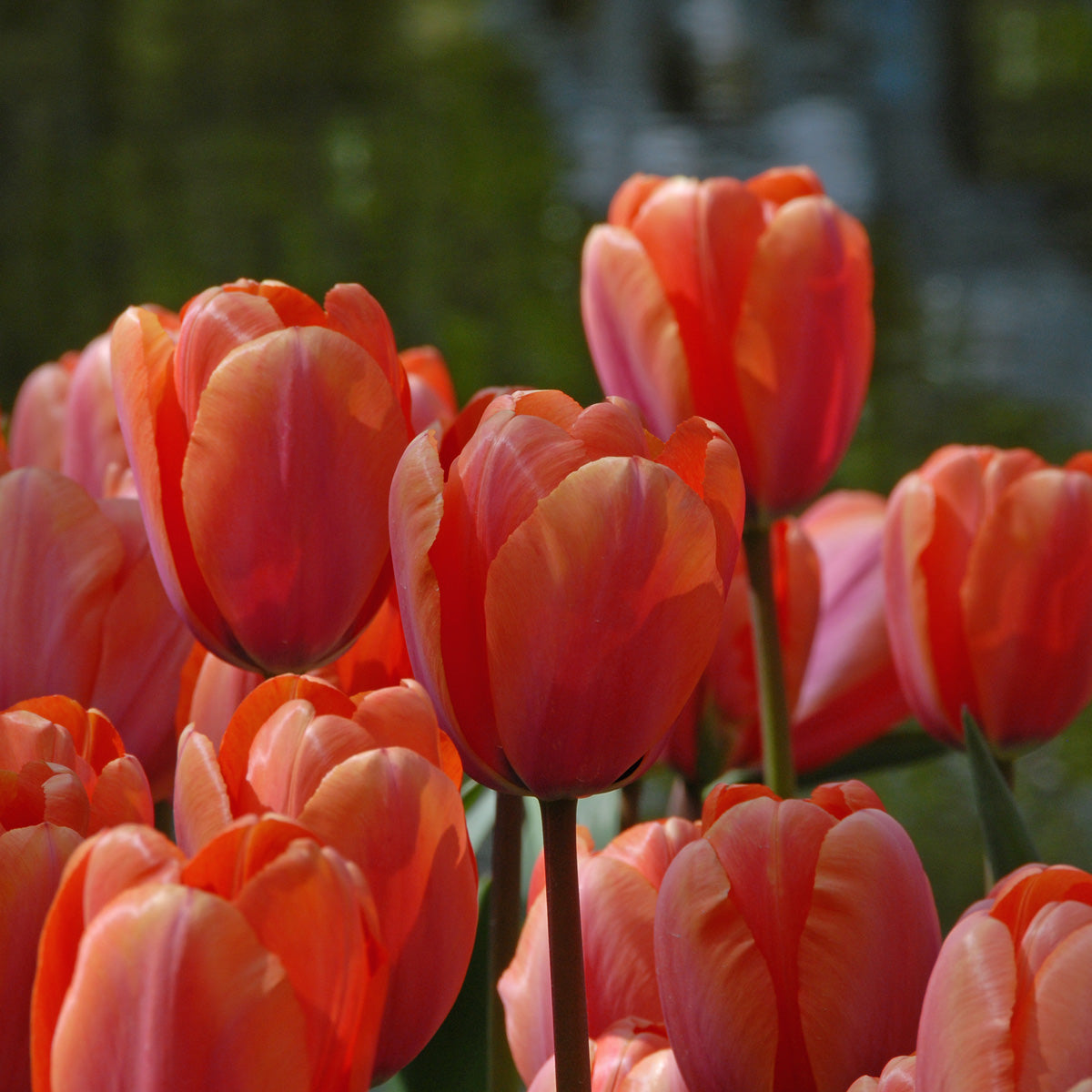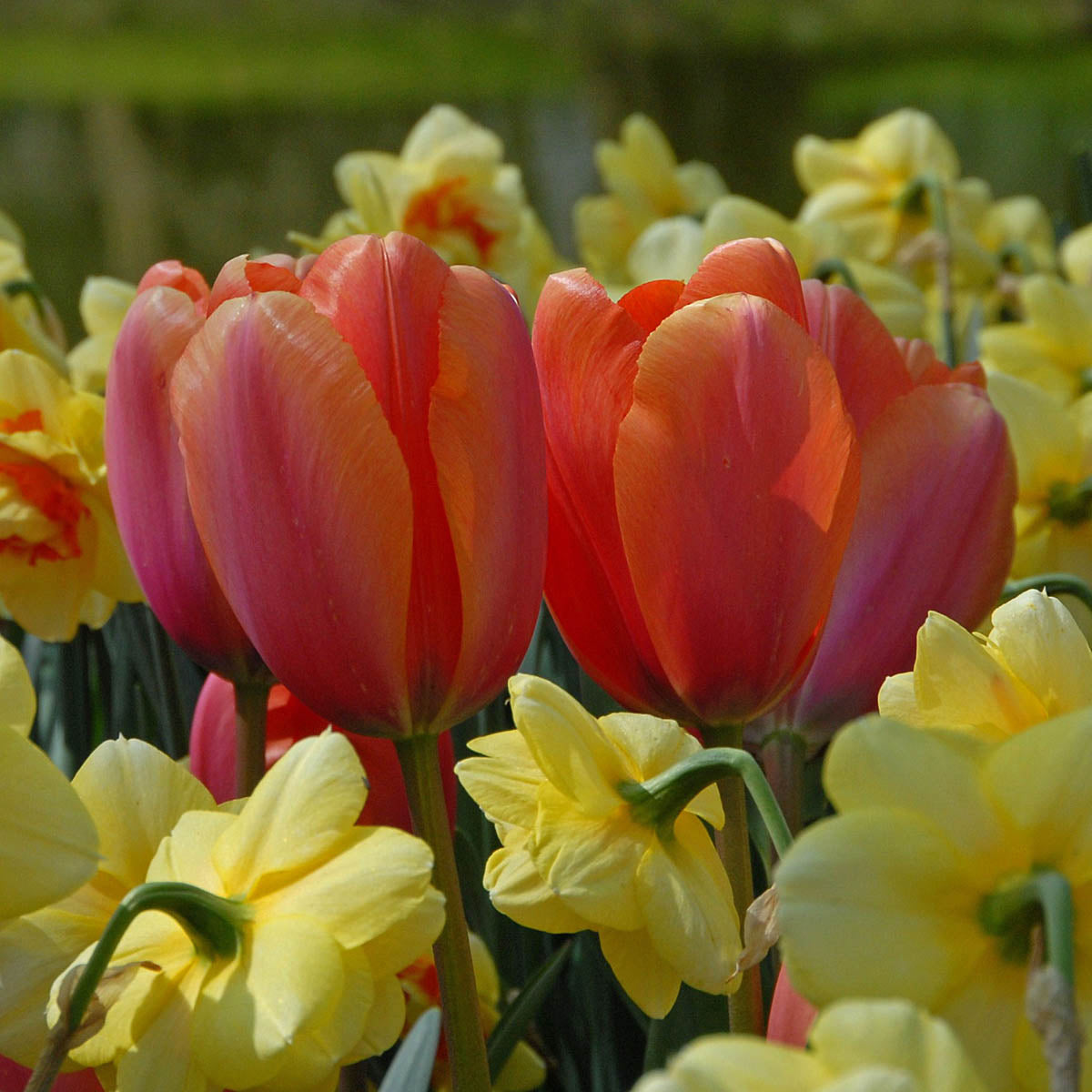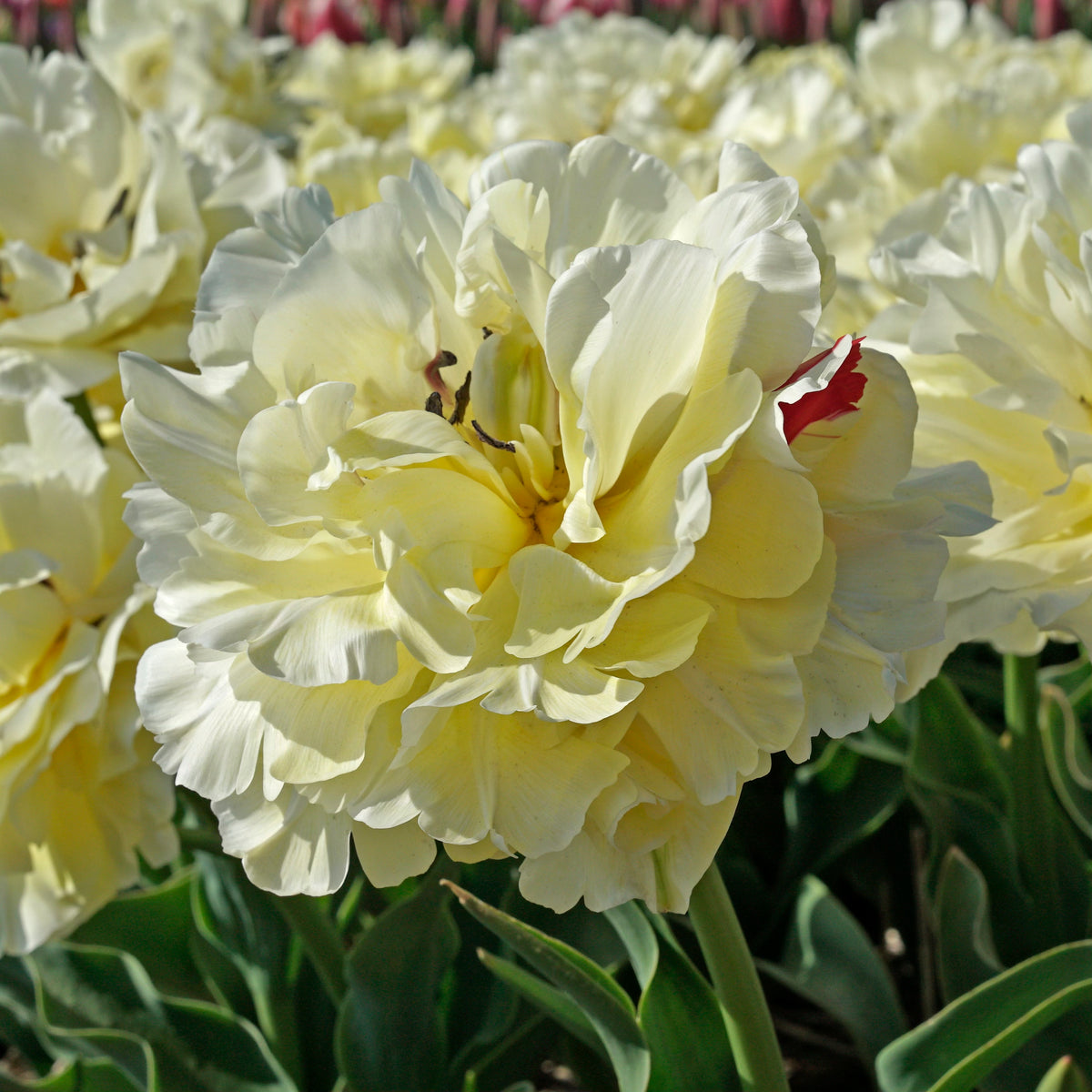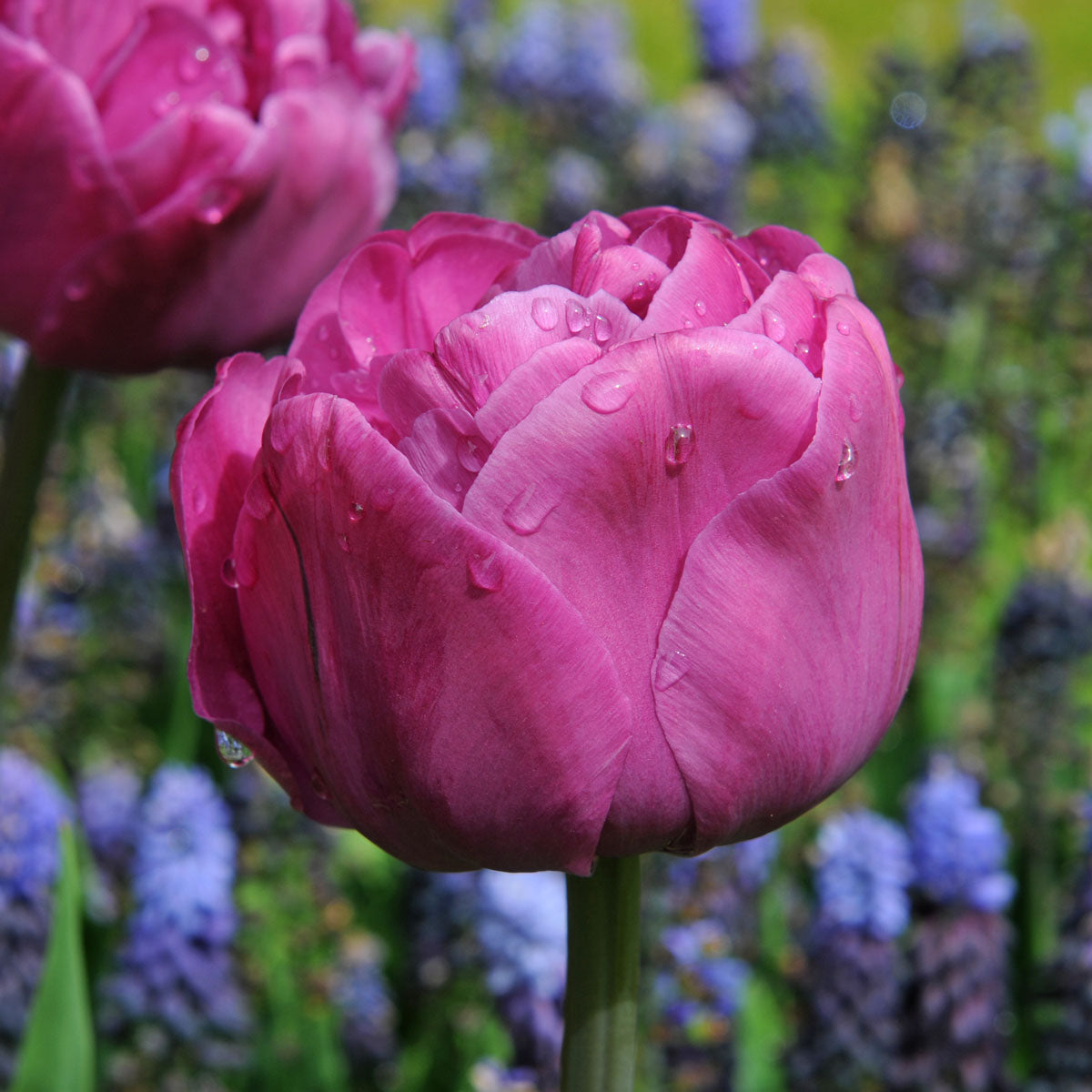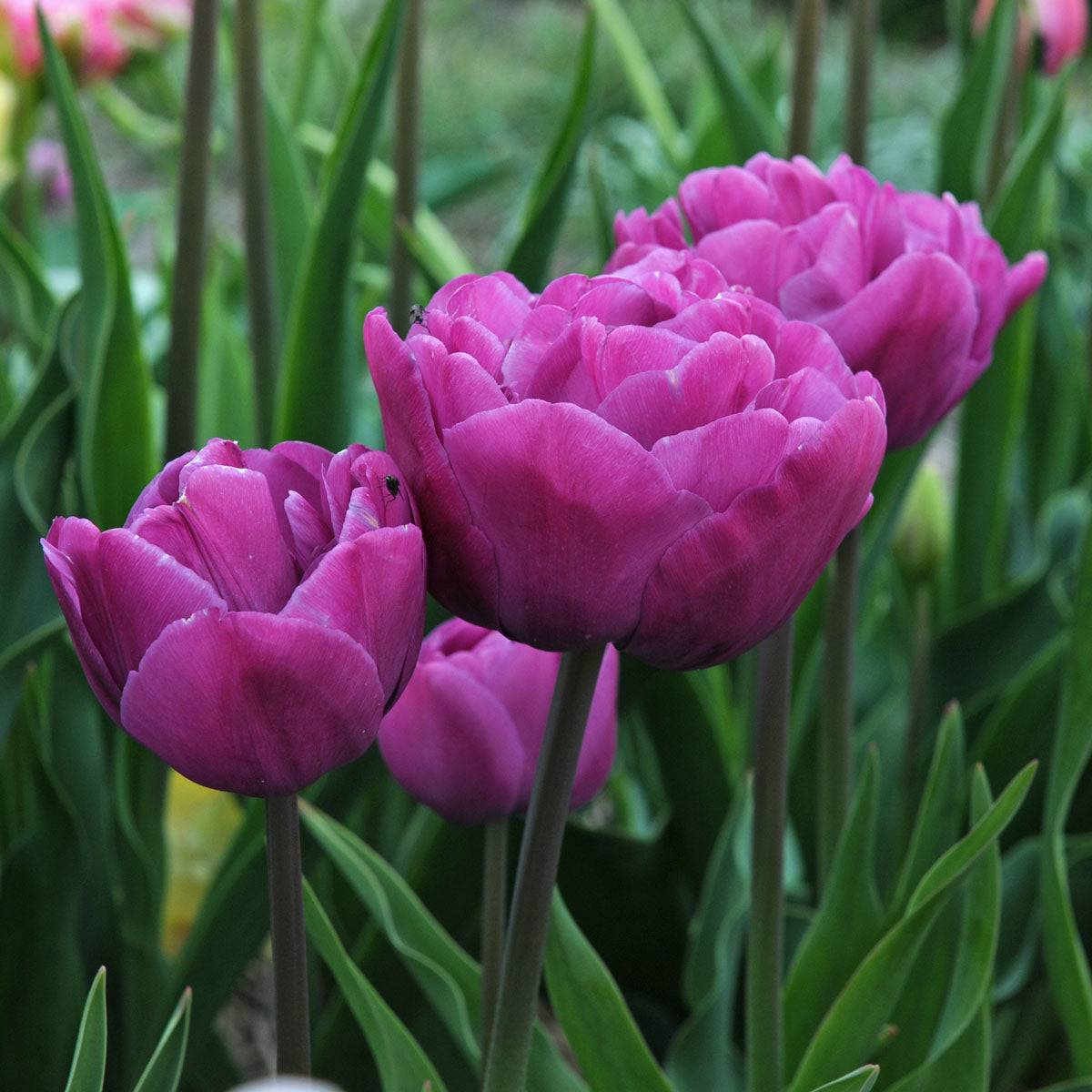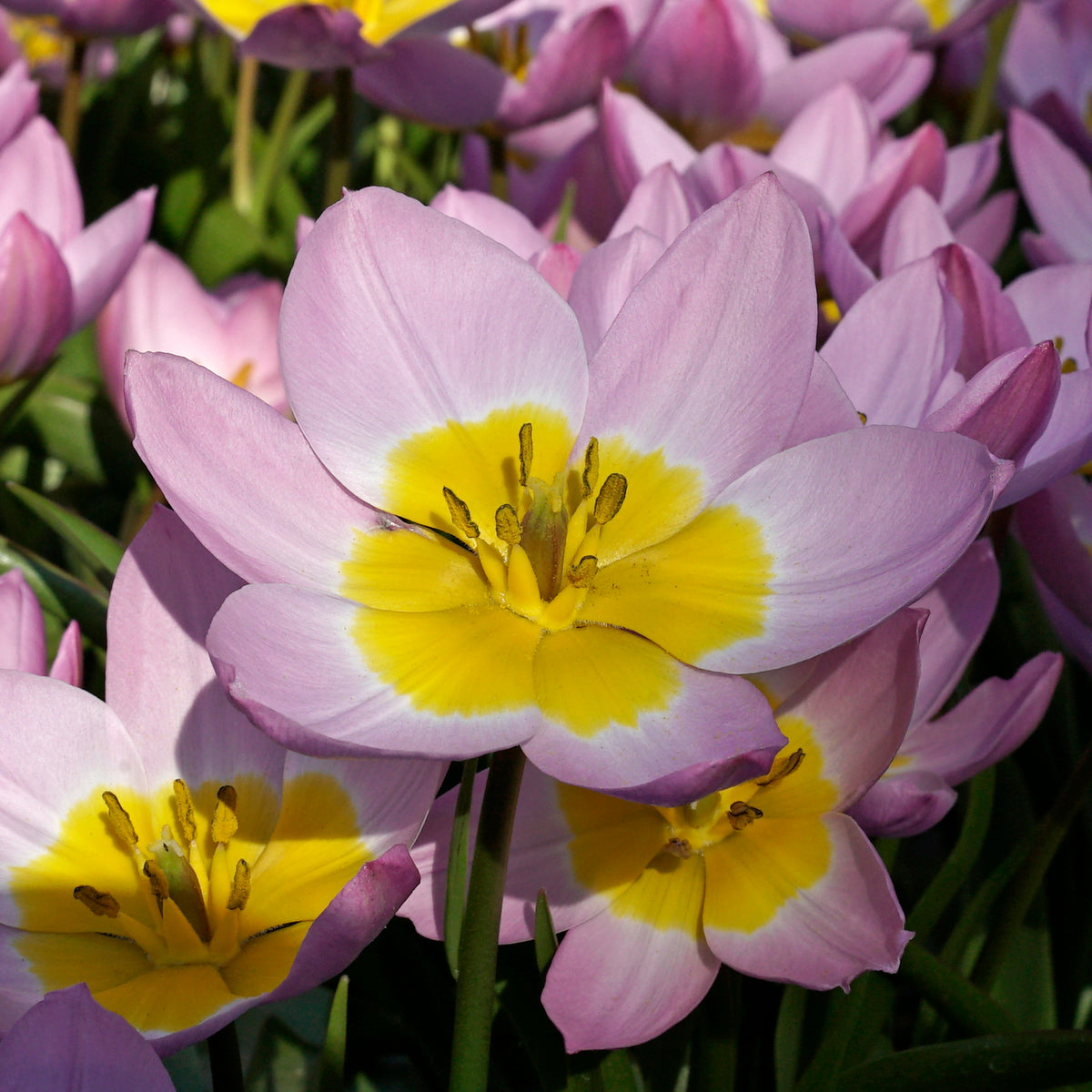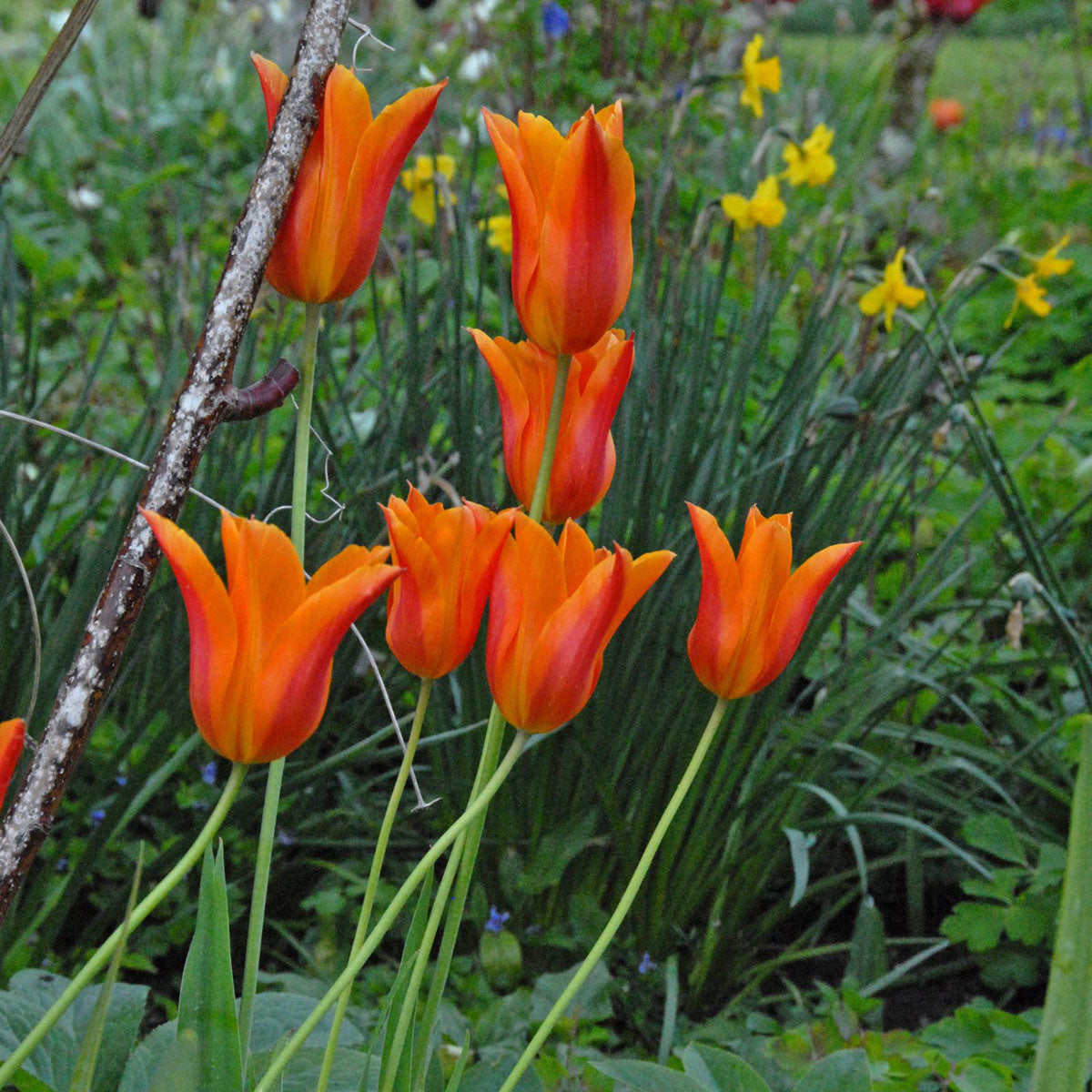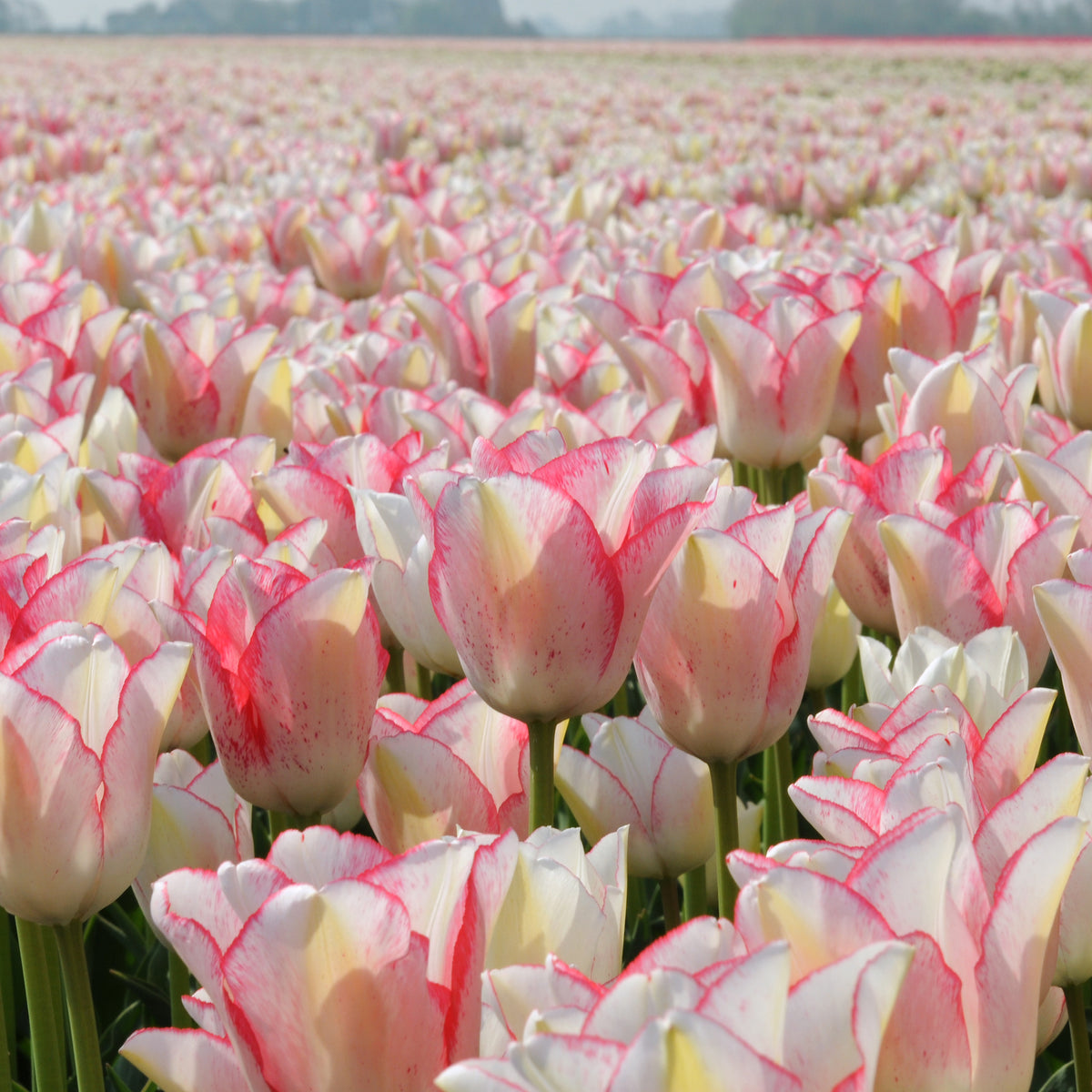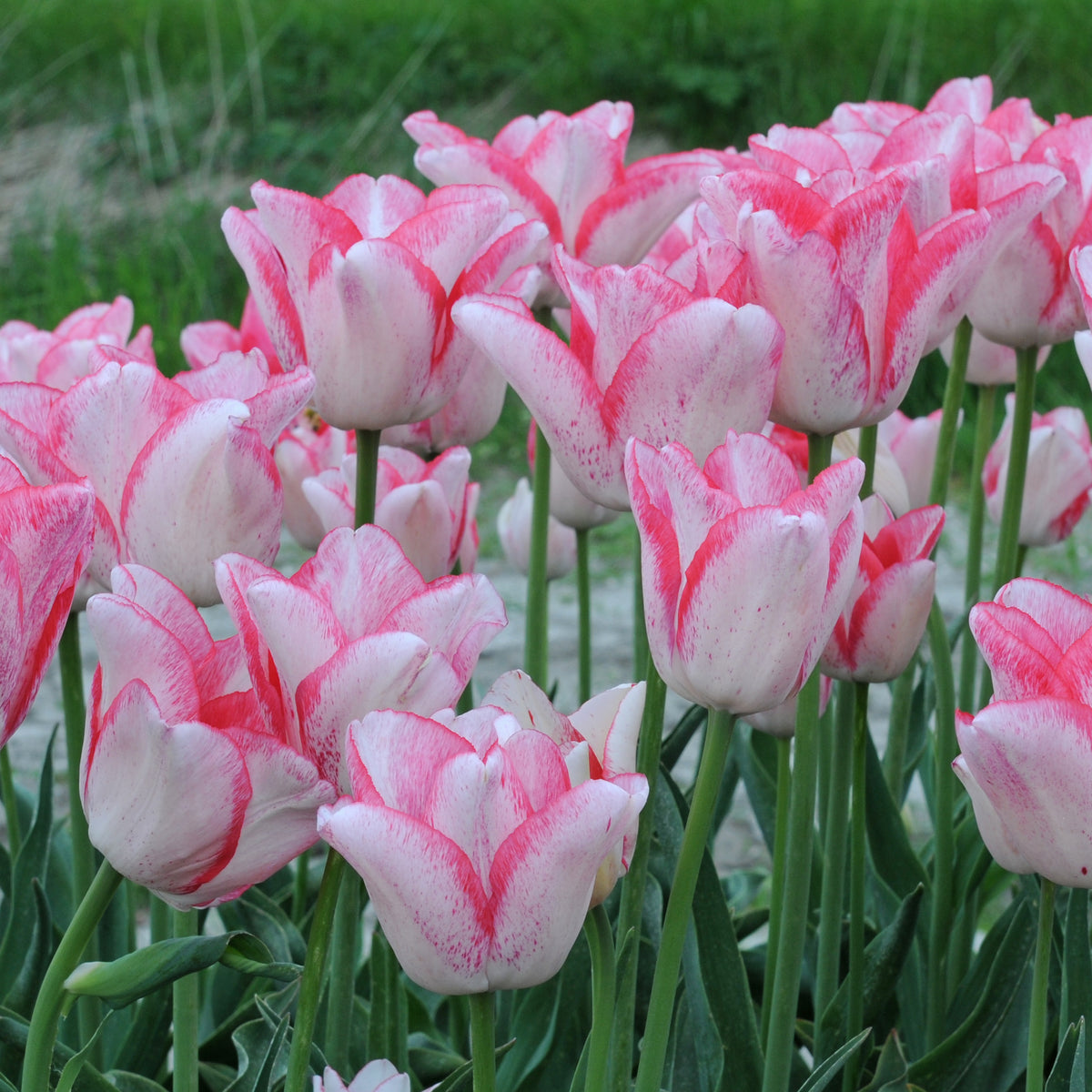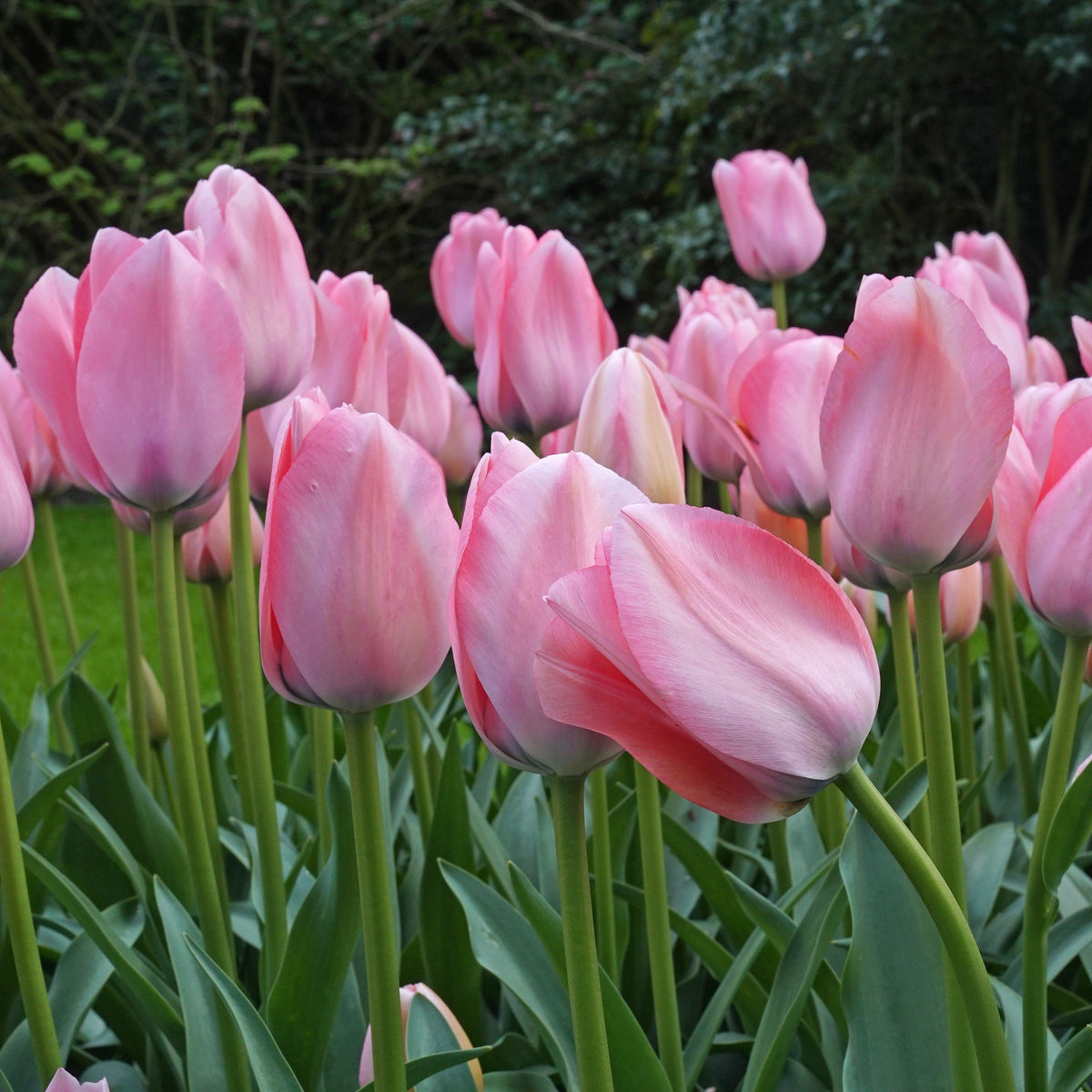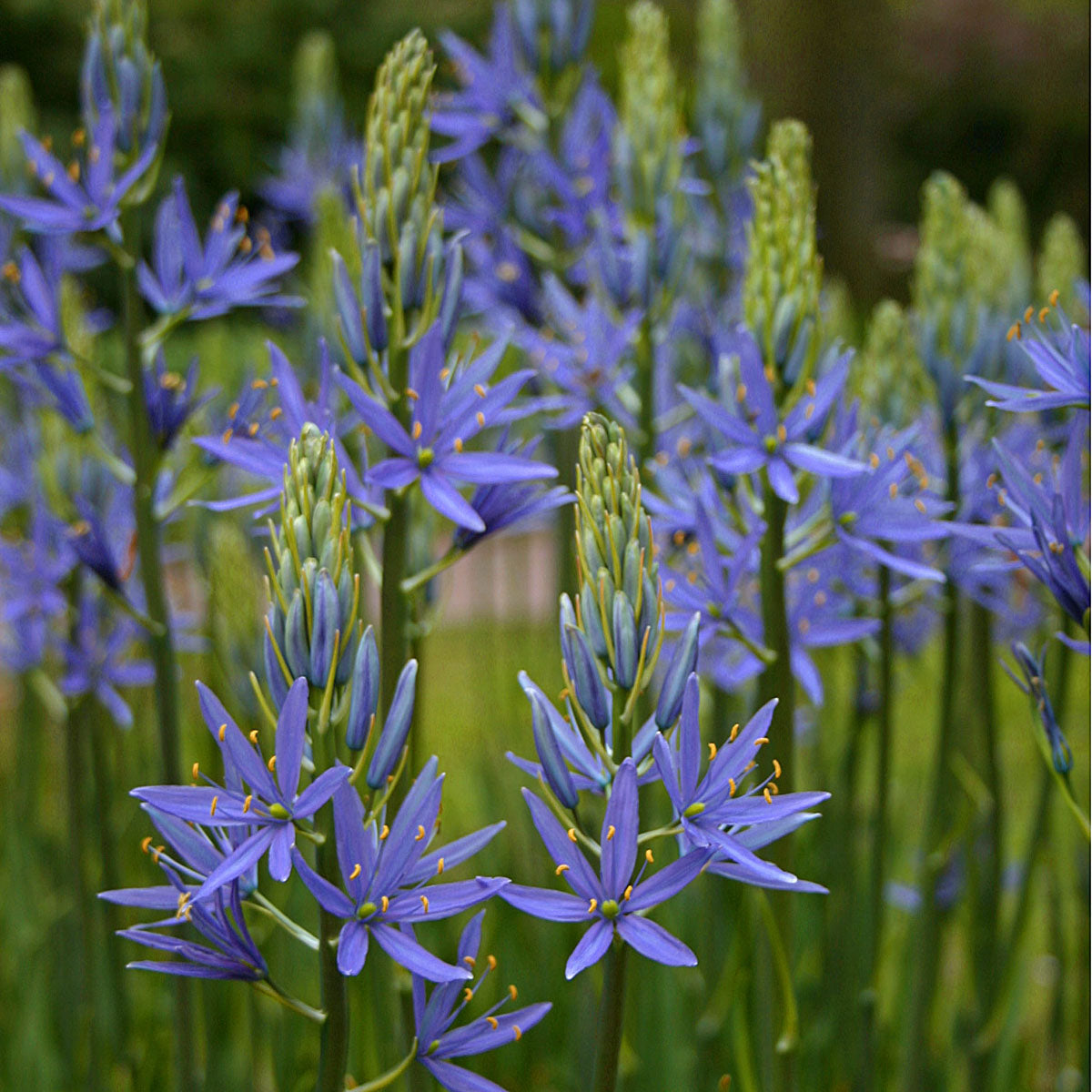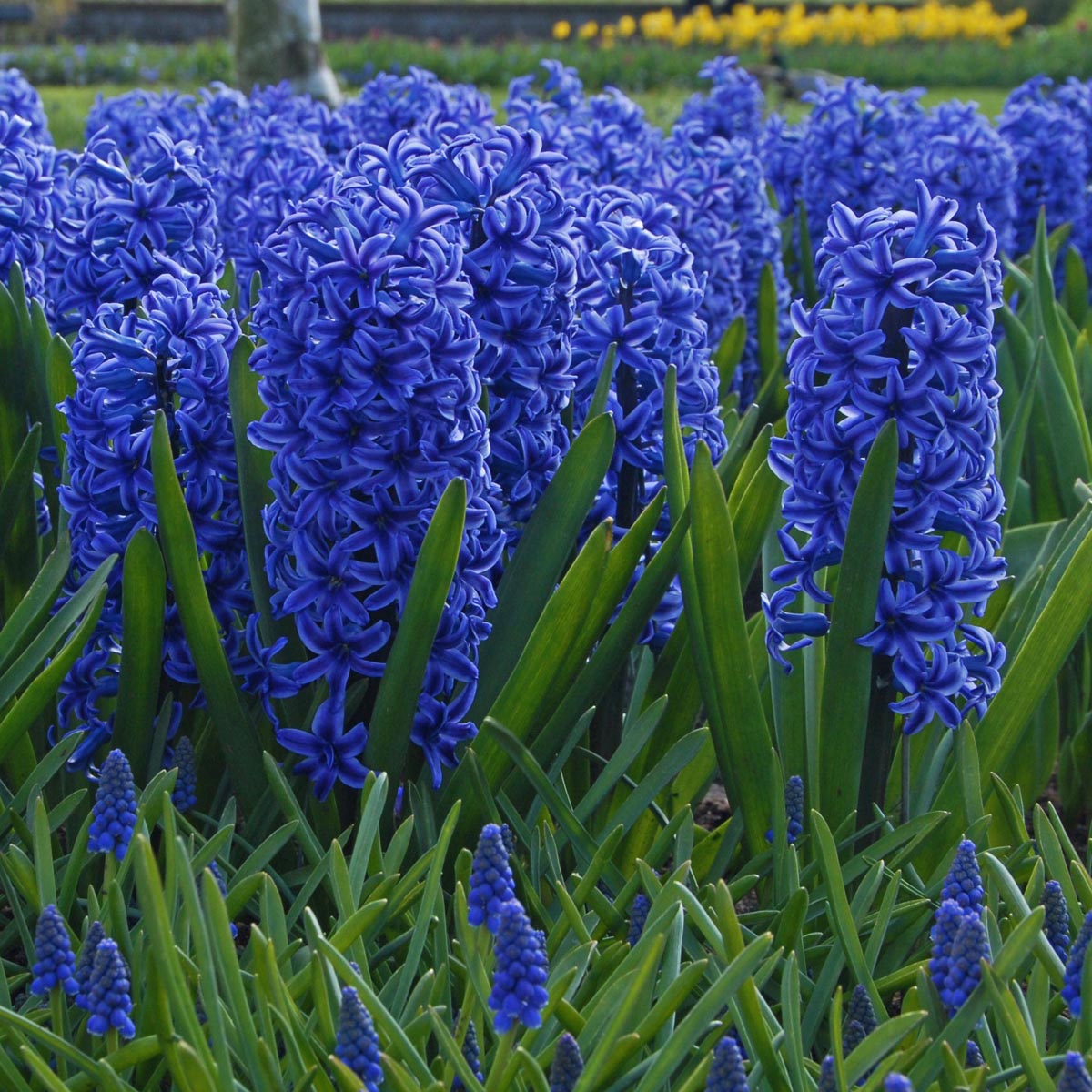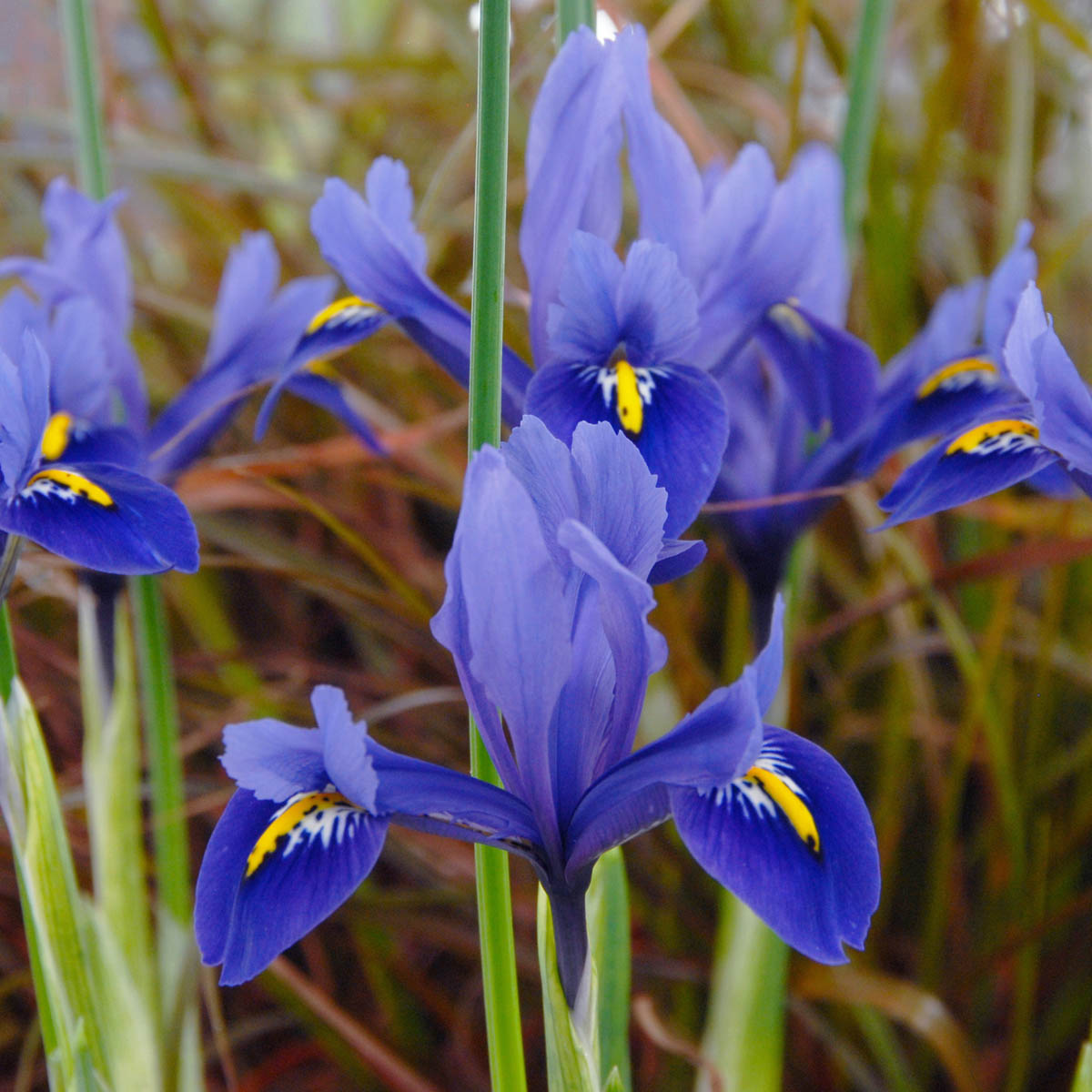
The history of flower bulbs in the Netherlands speaks to the imagination. Many people will immediately think of the infamous tulip mania, when madness struck in the Dutch Golden Age: tulip bulbs were worth more than ever, so much that the market eventually had to collapse. As happened in 1637. This was first economic bubble in history - it wouldn’t be the last one, not in flower bulb cultivation or otherwise.
A tulip stolen
Today we consider the tulip trade of the early 17th century a mistake. "Tulip mania" it is called, which is not intended to be a friendly name. But while it was happening, did people realise that things were going wrong? Apparently not, and that was why it could happen the way it happened. Ironically, the whole problem began with an overt mistake, a crime: the tulips Clusius had gathered in the botanical garden of Leiden were stolen. Why?
Breeding and hybridization
In some parts of the world tulips represented a great value. People found them as beautiful as precious stones and therefore gathered great collections of them. The first collection in the Netherlands was built by the scientist Clusius, whose intention was not to be richer, but wiser. People with other intentions found out about Clusius’s tulips in Leiden and realised it could be lucrative to steal them...
Stolen tulips gained attention, even back then, so they were not resold immediately. Instead, one started to breed the tulips. Small bulbs were replanted, the seeds were crossed, grown tulips were admired. There were specific mutations. New species, new colours, new gems - collectors would definitely give money for this! Thus, the crime did pay.



Tulip trade and pub talk
These unique tulips were usually sold in secret, because the collectors valued their privacy. Collecting was trendy in the early Golden Age, people preferred to spend their money on luxury. But as wealth grew and people gained more money than they could spend on luxury, people began to invest their money as well. Modern capitalism emerged in the Golden Age and that capitalism would also show its ugly sides immediately. This became the famous tulip mania: the first bubble, the first capitalist virus.
There is a Dutch proverb, stating that one man's death is another man's bread. That was certainly the case in the early seventeenth century. A plague caused many deaths and therefore many people cashed an interesting legacy. Young daredevils were suddenly rich and decided to invest their money in the tulip trade. Tulips were no longer considered as a collector’s item, but as an investment. Because tulips would increase in value all the time, wouldn’t they?
It sounds like pub talk, Dutch courage. Literally, because the tulip trade took place mainly in bars and taverns, while investors enjoyed fresh beer and Dutch gin. The investors incited each other to invest. Who could spend more than another, did so, if only to impress his friends in the pub. Thus the tulip trade became insane, "tulip mania": like a virus the pub talk spread. The nouveau riche invested their wallets empty, hoping that their investment would be valuable enough to pay it back.
Tulip virus
The tulip virus was a real virus, actually, but that was still unknown by then. Due to the intensive breeding the tulips became susceptible to disease. Viruses changed the colour of the tulips and created a very graceful, marbled appearance. But ill tulips cannot be multiplied. Investing in such a tulip was totally pointless. However, many people did it because they knew no better, and because they did not want to lag behind the other people in the pub who invested too.
Tulips as houses
The investors bought tulips without seeing them. They bought a promise, a paper which said that next season beautiful bulbs would be theirs. Most of the time, these promises were not even true, because the rarest tulips could not be multiplied (due to the virus). But investors continued to invest. The price of tulips rose through the roof. In the city of Hoorn, they sold an entire inn for three tulip bulbs. Eventually a single tulip sold was worth as much as a canalside house. That could not last forever!
The bubble bursts
In February 1637 the prices decreased for the first time in years. The investors were empty, the promises could not be fulfilled. The first unsuccessful auction took place in Haarlem. Later the bubble burst in Alkmaar, Hoorn and other Dutch cities. Buyers could not meet their payment obligations, sellers could not deliver. They had sold each other nothing but hot air. The trade had been speculation.
Luckily, fate gave the investors a windfall. The buyers did not have to pay their debts as long the seller could not meet its obligations. The court accepted no more cases about tulips. By doing nothing, the judges prevented quite a few bankruptcies. The tulips were buried in the ground. Although the tulip trade was often mocked by poets and comedians, prices would stabilize and eventually tulips cultivation became a respectable industry.
Bulb bubbles after the tulip mania
The hype that was created around tulips had much to do with the novelty of the product. People did not know the tulip bulbs yet, so they could not know their value. This was not the last bubble in bulb history. In the 18th century, hyacinths became hip and a new bubble arose, which burst in 1737, precisely a century later. More recently lilies and gladioli were the object of speculation. It went wrong in other industries as well: the new internet caused a bubble in the early 21st century.



Discover the history at Land van Fluwel
The history of the tulip is shown in Land van Fluwel, our cheerful theme park dedicated to the tulip. Follow the long voyage of the tulip and experience the madness of tulip mania, between reconstructed canalside houses. Fluwel does even more. On our site you can read more about the history of flower bulbs. Fluwel stands in a long tradition – but tulip mania is over now!
























 Deutsch
Deutsch English
English Nederlands
Nederlands




